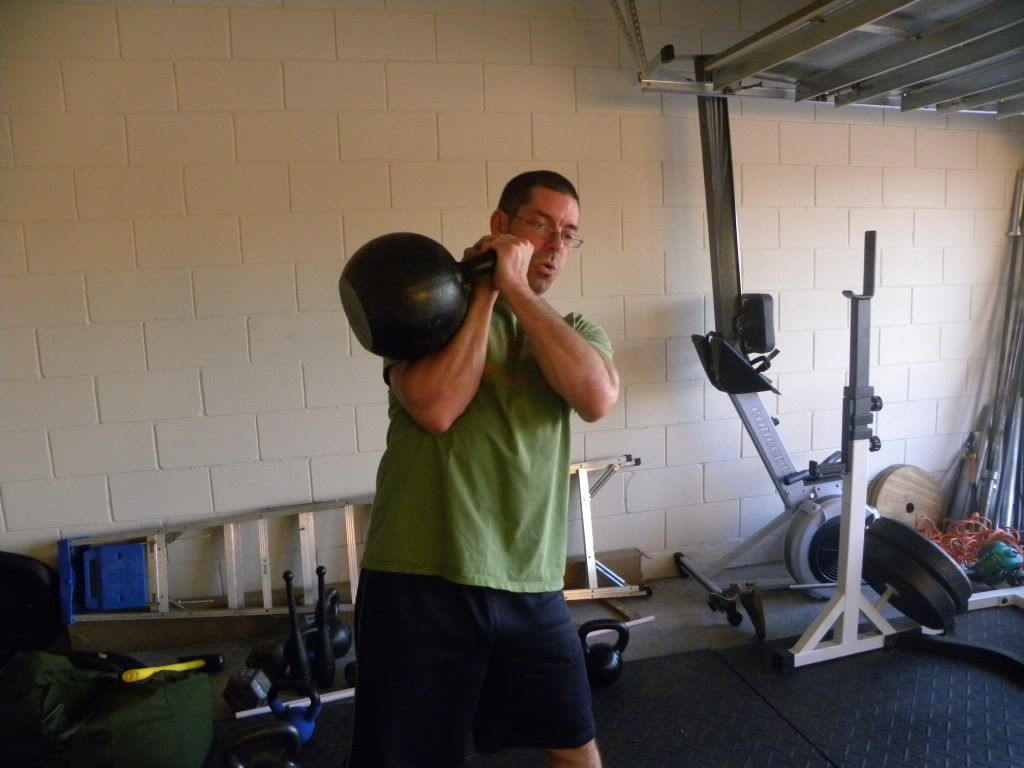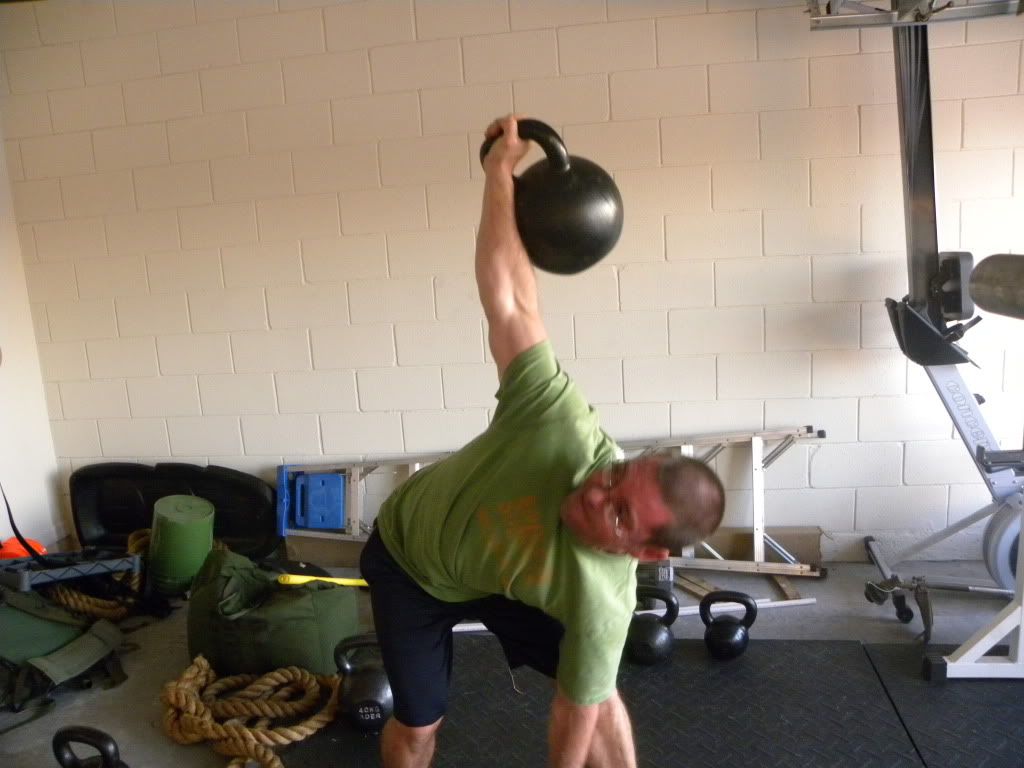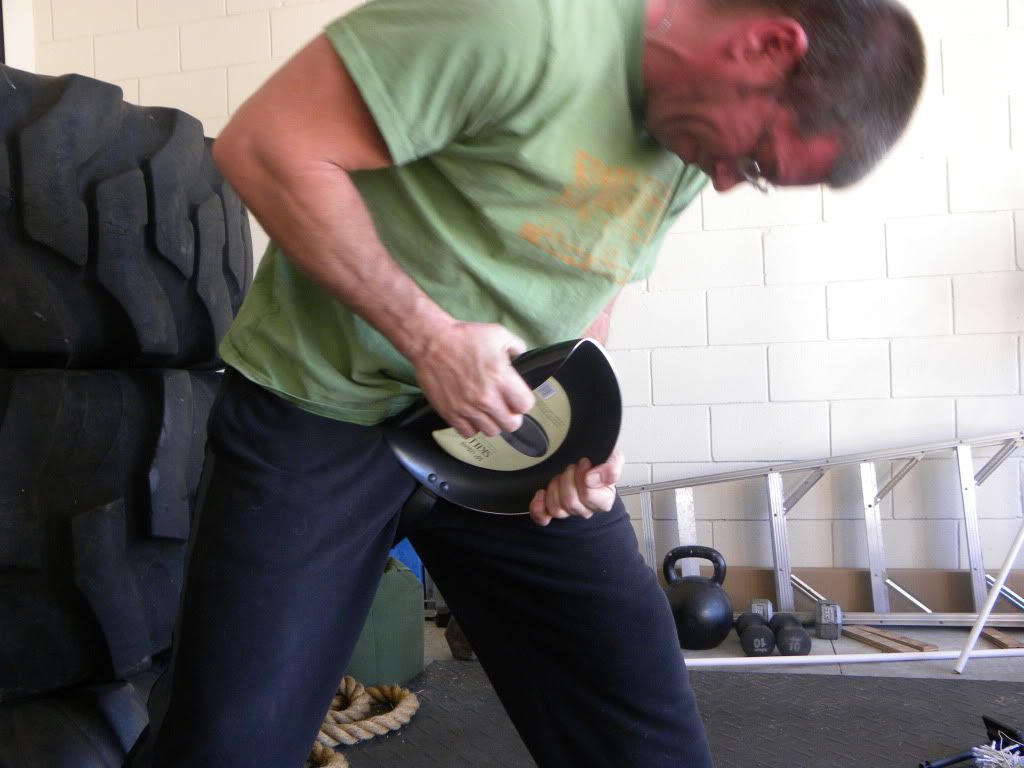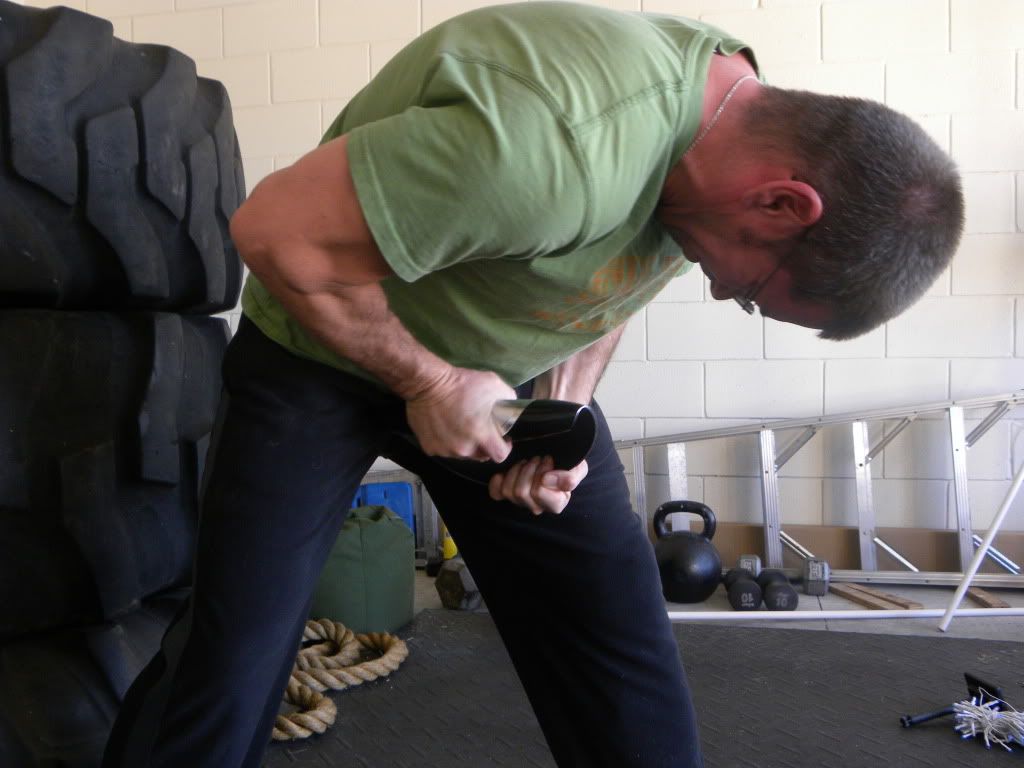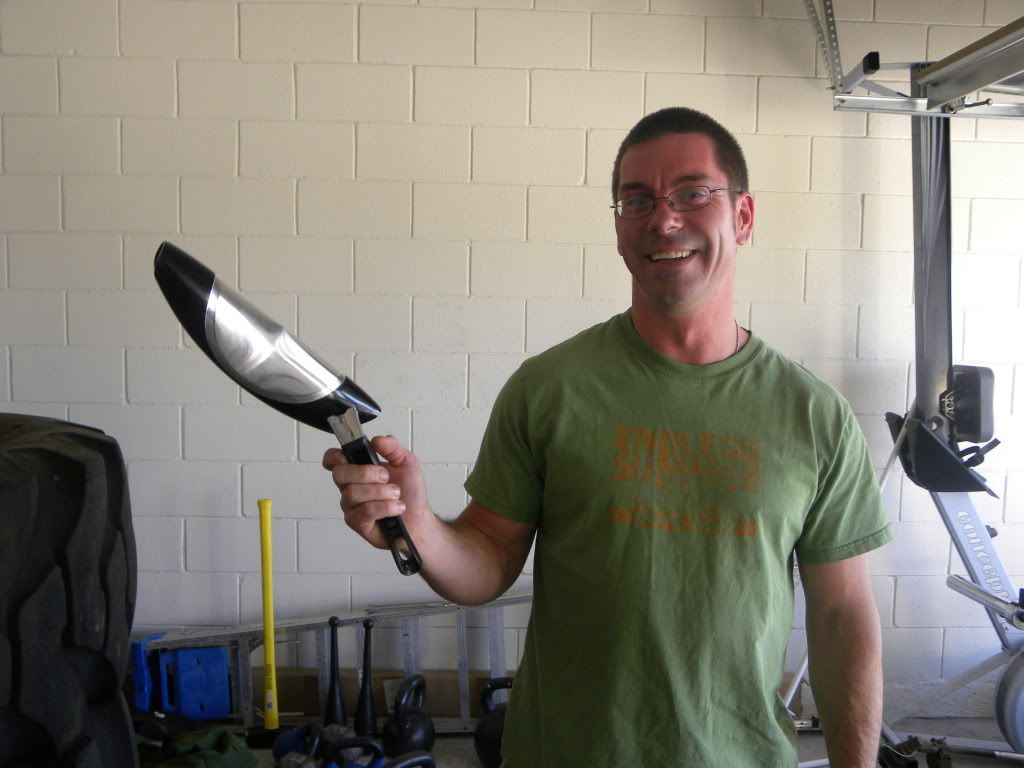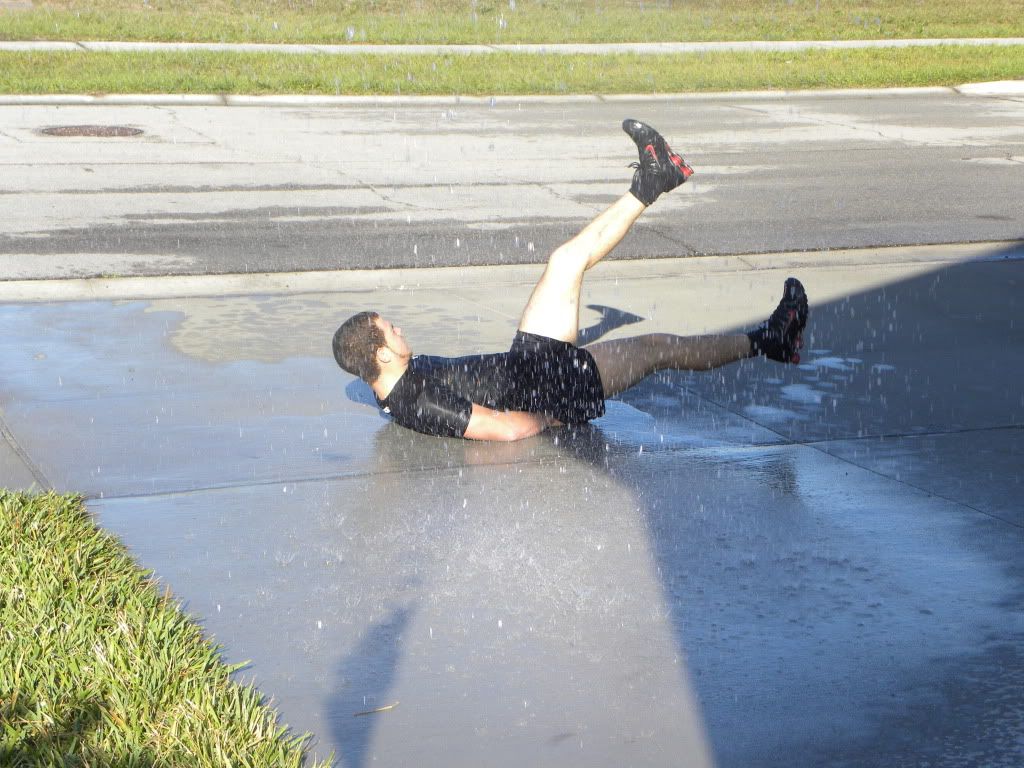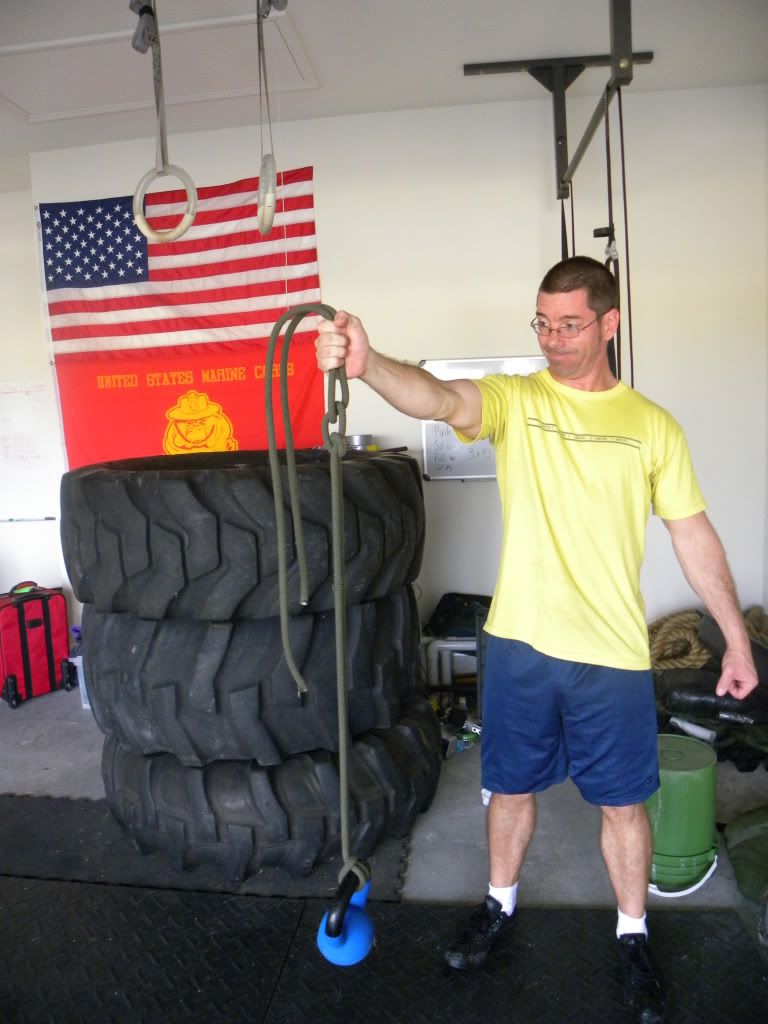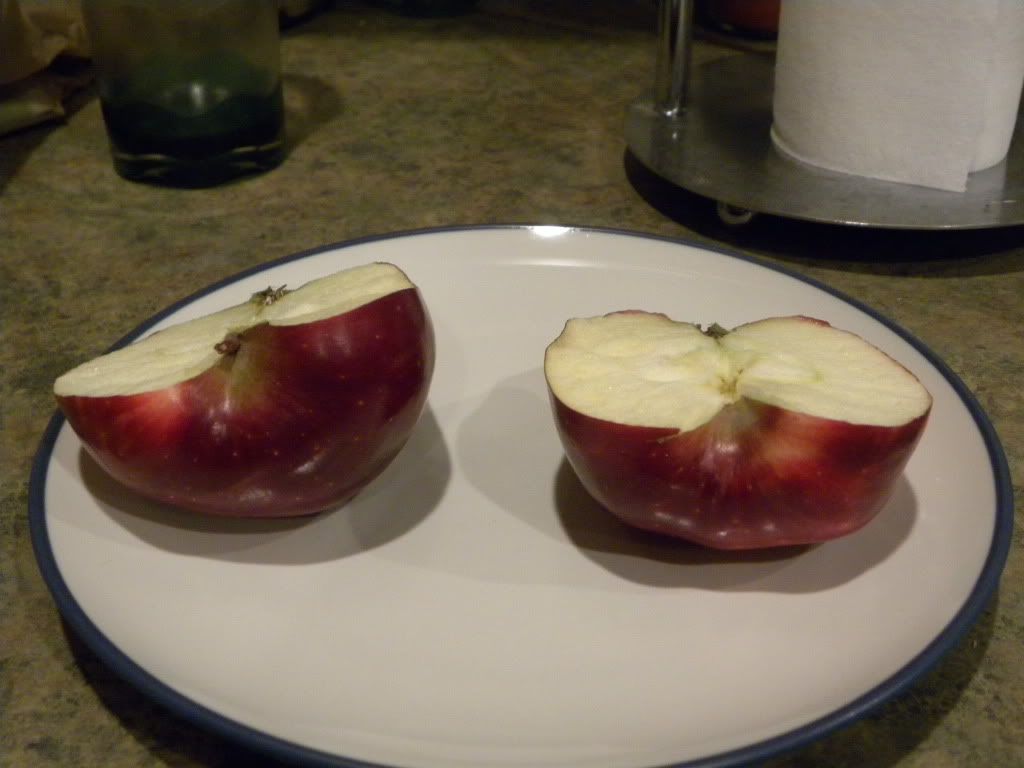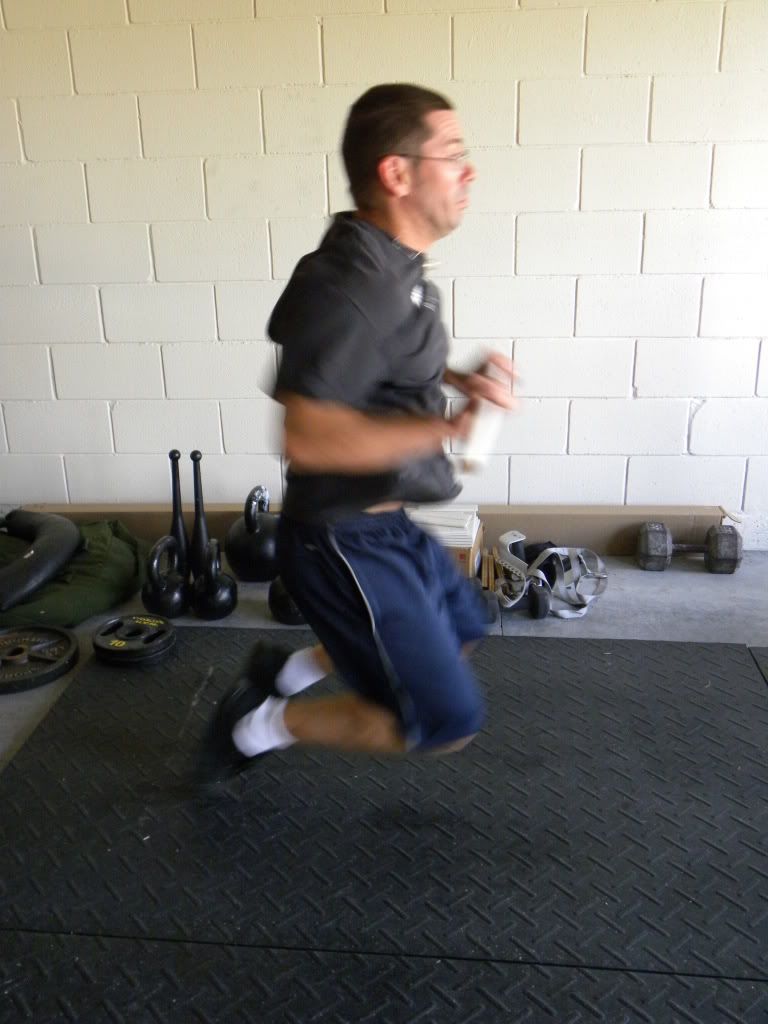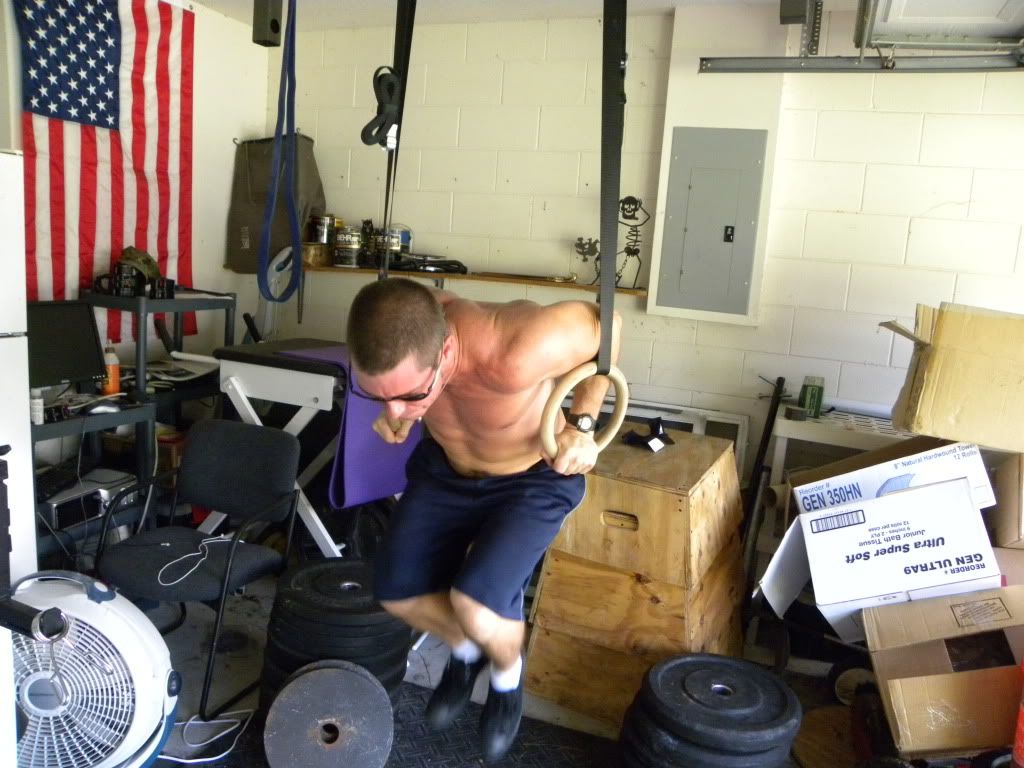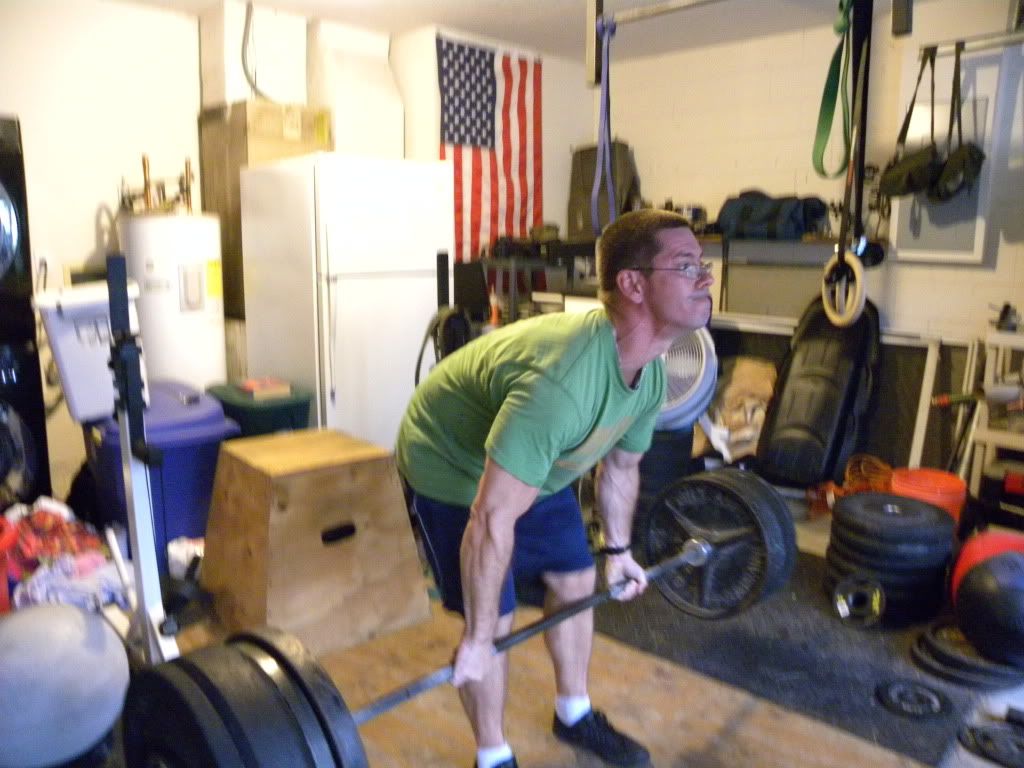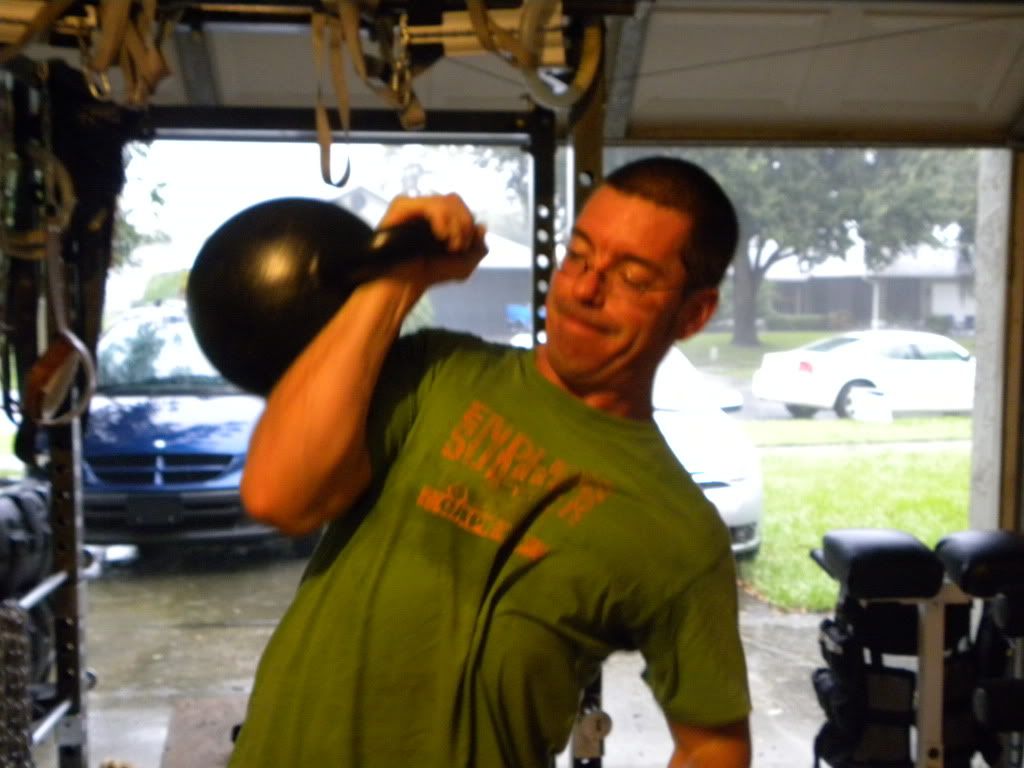Friday, December 31, 2010
Wednesday, December 29, 2010
7 Habits Of Highly Defective Bench Pressing
As I've seen these two ends of the spectrum, I've come to realize that the best guy to teach you a curveball is rarely the one who has had a dirty 12-to-6 breaking ball since he was in seventh grade. Rather, the guy that can teach you the most is the one who struggled with his curveball for years and tried everything to even turn it into a mediocre pitch.
Likewise, the best hitting coach hasn't batted .400 for a month, let alone a season. The best guy to teach you how to rake is the one who busted his butt to get from a .170 to .250 batting average.
When it comes to deadlifting, I've been pretty blessed. While I've worked my butt off and experimented with a variety of methods to bring it up, it's the lift that's always come naturally to me -- to the tune of a 650-pound deadlift at a body weight of 174 pounds in my last competition.
Read the rest of this article here
Goblet Squats
5-10-5 Test
AMRAP 20
1 Front Squat (Men use 185/Women use 123)
Run 100m
3 Weighted Pull Ups
T-Spine Mobility
Depth Jumps
D/E Shoulder Press
10x2 @ 70%
5 Rounds
5 Power Cleans (Men use 155/Women use 103)
10 Burpees
Sunday, December 26, 2010
Dennis Rogers
Arm Bars and Brettzels
M/E Snatch
3 Rounds
Run 400m
25 Swings (Men use 48k/Women use 32k)
10 Tactical Pull Ups
Wednesday, December 22, 2010
Red Nails Die
Read about Dave's Red Nail crusade here
Jumping Pistols
4x1
Zurcher Squats
2x6
Barbell Complex
Hang Power Snatch
Overhead Squat
Good Morning
Row
Deadlift
Monday, December 20, 2010
The Jumping Position
Sunday, December 19, 2010
No Internet
Sunday, December 12, 2010
Derek Poundstone
Goblet Squats
PNF Hamstring Stretch
M/E Deadlift
Reverse Hyper 2x20
4 Rounds
3 Muscle Ups
10 Kettlebell Snatches
Thursday, December 9, 2010
Wednesday, December 8, 2010
Manufacturing Costs Vs. Retail Costs
If the costs for the packaging (the bags) is subtracted from their total manufacturing costs, plus paying a company to put the protein in those bags, the total cost for $30,000 worth of their product is just around $2,000. If the discounts are added in, we find that Progenex is selling Crossfitters $2,000 worth of protein for $20,000. Therefore, according to their own financial reports, each $60 bag of protein costs about $6 to manufacture.
If you’re a Crossfitter thinking about buying Progenex, please consider that you are actually paying $60 for a $6 bag of whey protein, and the rest of your money is going into the pockets of people like Darren Meade.
Read this article here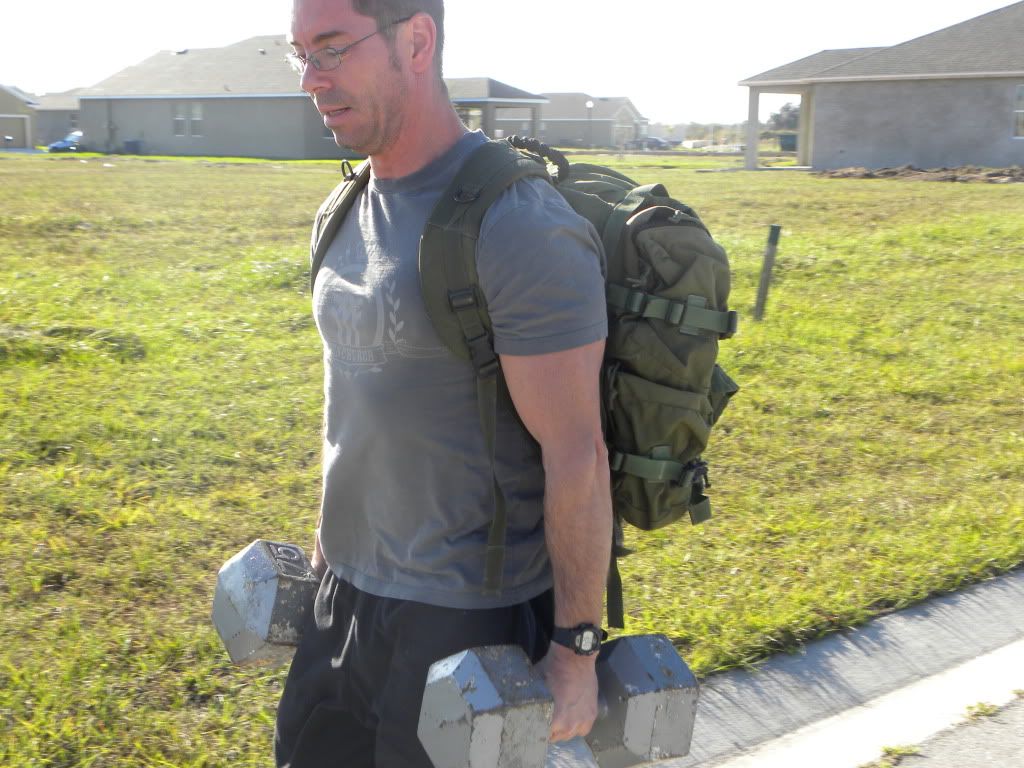
Box Squats
8x3 @ 65%
Kettlebell Complex
3 Cycles of 6 reps each
Double Swings
Double Cleans
Double Presses
Double Snatches
Bent Over Rows
Tuesday, December 7, 2010
Squat Like A Girl
Single Leg Deadlifts
3x3
5 Rounds
5 Tactical Pull Ups
10 Hand to Hand Swings
Bear Crawl
Monday, December 6, 2010
Pressing With Power Breathing
M/E Press
Some Quality Time With "Judy"
Thursday, December 2, 2010
Tuesday, November 30, 2010
Say CHEESE!
Many years ago I was running intervals at the track when I noticed something. I believe I was somewhere around the third lap of my fourth 1,600-meter interval in a set of six when I became aware that my entire face was tense. By this point in the workout I was feeling rather fatigued and working very hard. My facial muscles were contracting as part of the overall effort. Nothing unusual about that, but on this particular occasion I became conscious of it and responded by consciously relaxing my muscles, which I was able to do quite easily because, of course, it is not necessary to tense one’s facial muscles to run hard. When I relaxed my face I felt that the effort required to complete the interval was ever so slightly reduced.
You can tell how hard any runner is working simply by looking at his or her face. The greater the effort, the more agonized the facial expression becomes. In the last part of any race, runners typically wear facial expressions that, outside of the running context, are seen on them only when they are in pain. The last-mile-of-a-marathon look is also the post-toe-stub look.
Read the full article here
Preparation for BUD/S
Powermetric Pull Ups
5 Rounds
10 Burpee Box Jumps
5 Power Cleans
Magnus Samuelsson
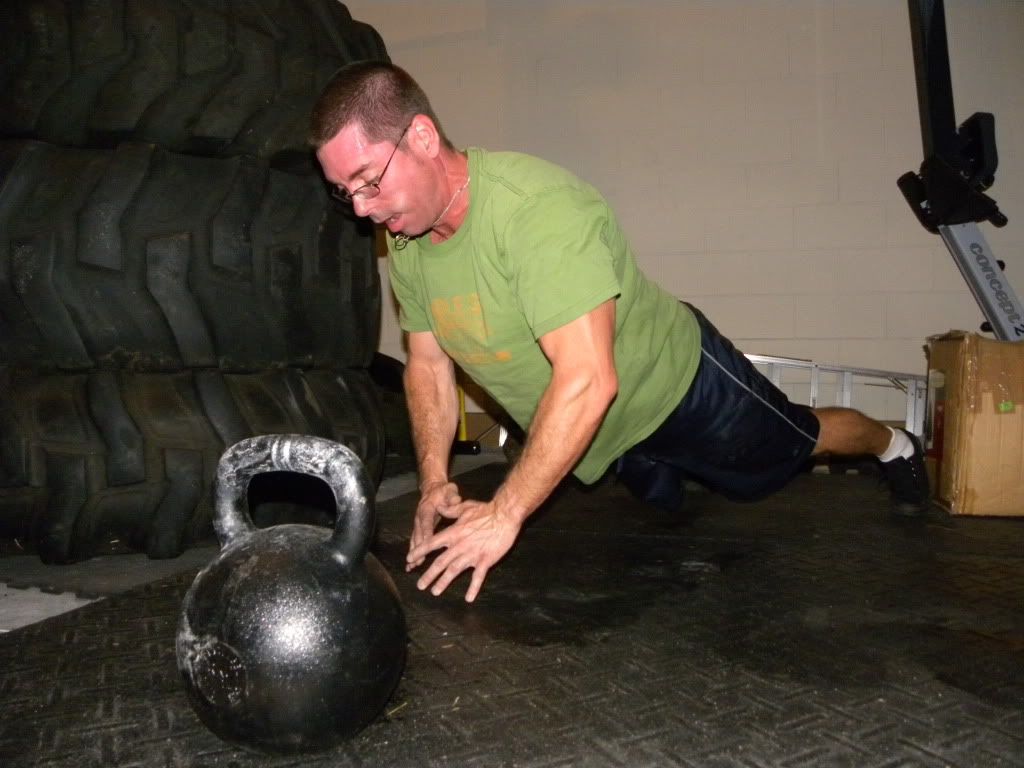
Clapping Push Ups and The Beast
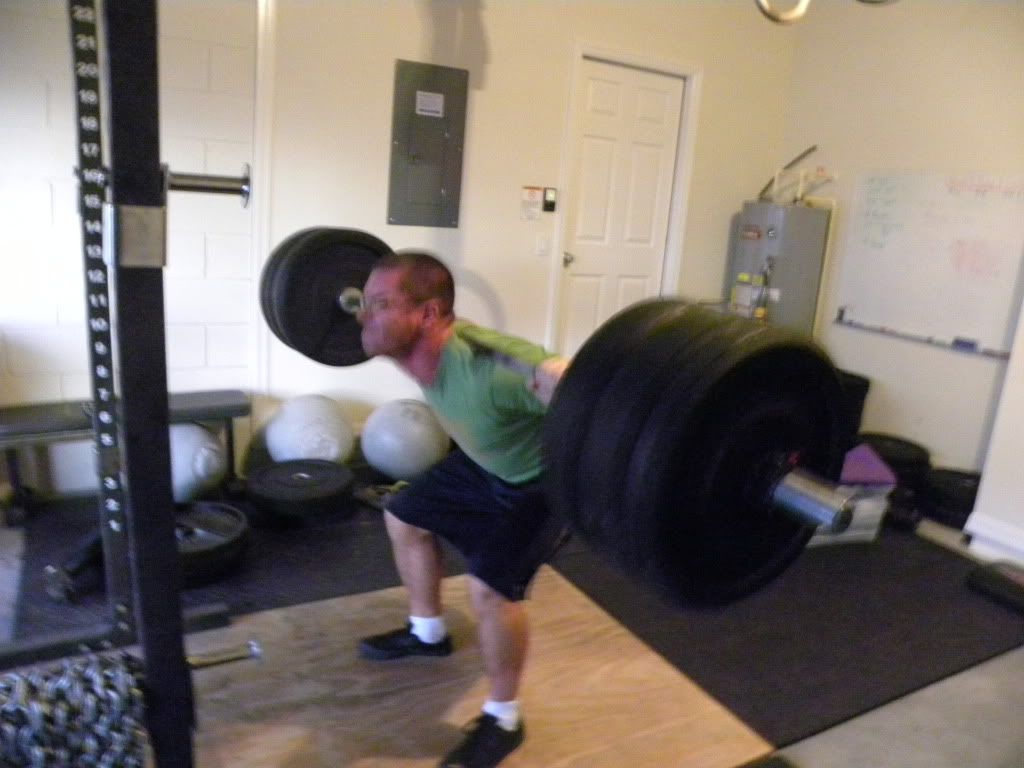
PR Back Squat
Snatch 2x2
4 Rounds
10 Tire Flips
20 Kettlebell Cleans
Monday, November 29, 2010
When Grok Meets Krog
Read the rest of this article here

Tug-of-War. 130 pounds vs 130 pounds
Goblet Squats
Wall Squats
M/E Back Squat
5 Rounds
20 Clapping Push Ups
15 Kettlebell Swings (Men use 48k/Women use 32k)
Tuesday, November 23, 2010
David Whitley
Conditioning Rope
Jumping Squats
6x2
Pistols
4 Rounds
Sled Pull
5 Double Kettlebell Snatches
Double Kettlebell Snatch
Mike Mahler's technique (Mike is a Senior Certified Kettlebell Instructor) is similar to that used by Olympic weightlifters. Mike extends his body and drives his elbows back in order to pull the kettlebells closer once they are level with his head. This kind of double kettlebell snatch pull is an extremely effective upper back exercise on it’s own. When using this technique you should do lots of sets each consisting of low reps. Do not pull with your biceps, use your upper back and momentum instead. Also, drop the KBs back between your legs in between each rep. Once you get the hang of it, practice dipping underneath the KBs and locking out upon completion of the rep.
Following a heavy double snatch remember to ALWAYS lower the kettlebells to your chest before you drop them between your legs.
Brett Jones (another Senior RKC) performs his double kettlebell snatch in a classic "hard" style. His arms stay straight and rigid, with his hips driving hard without a second dip. If you want to work up to this, start by snatching the kettlebells higher and higher with every rep until they’re directly overhead.
With this exercise you will be dropping the kettlebells in one fluid motion and the force of momentum (or ballistic force) will be very high, so you should watch your knees and start out with a lighter weight than you may be used to in order to avoid hurting yourself.
Do not try this one-step version when you go to heavier kettlebells, instead start out with the two-step, pause at the chest method.
This article taken from Kettlebell-Training.com

The Double Kettlebell Snatch
Weighted Dips 2x2
Bent Presses
4 Prowler Sprints
Sunday, November 21, 2010
Wednesday, November 17, 2010
Speed Dynamic Warm Up
Tuesday, November 16, 2010
Coaching Session With Coach B
Sunday, November 14, 2010
Brett Jones Demonstraing Our End Goals
Friday, November 12, 2010
Tuesday, November 9, 2010
My Philosophiae
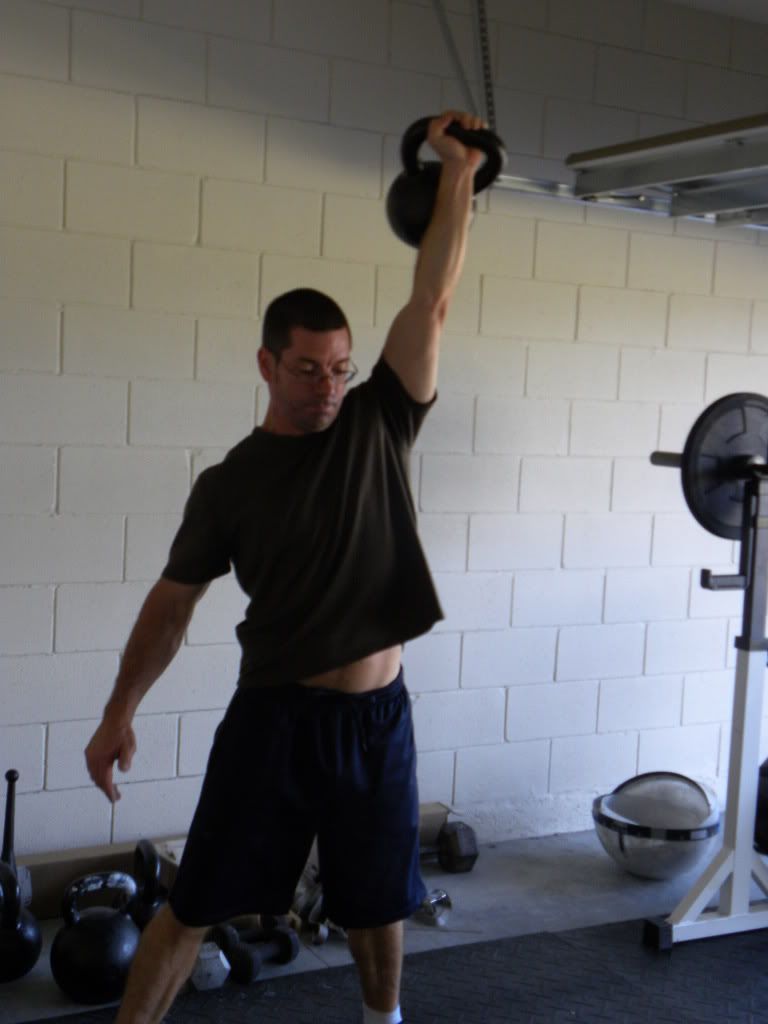
The king of kettlebell movements
Knee Snatches
D/E Bench Press
10 Minute VO2Max
Postural Analysis
After studying athletes from the youth ranks through the professional ranks and walking through many malls and mass people depots throughout the United States, there are several commonalities which exist:
1. People have very poor posture.
2. People are unaware that they have bad posture, which contributes to daily pain and breakdown over time.
The above have been the driving forces behind our programming for a number of years. Understanding the relationship between posture and injuries has led us to many advances in corrective protocols. It has also helped us understand how sometimes the core exercises, such as squats, deadlifts, and bench presses, might have more negative effects than positive ones in certain situations and that at times our training and field research have actually hurt our athletes.
The analysis of posture; shoulder, head, pelvic, and foot positioning; torso length; and body sway have given us tremendous insight into the bodies of our athletes and clients. The ability to understand the underlying cause of the above will allow us to resolve daily pain caused by negative stress, which leads to poor joint functioning and negative movement patterns.
Read the rest of this article here
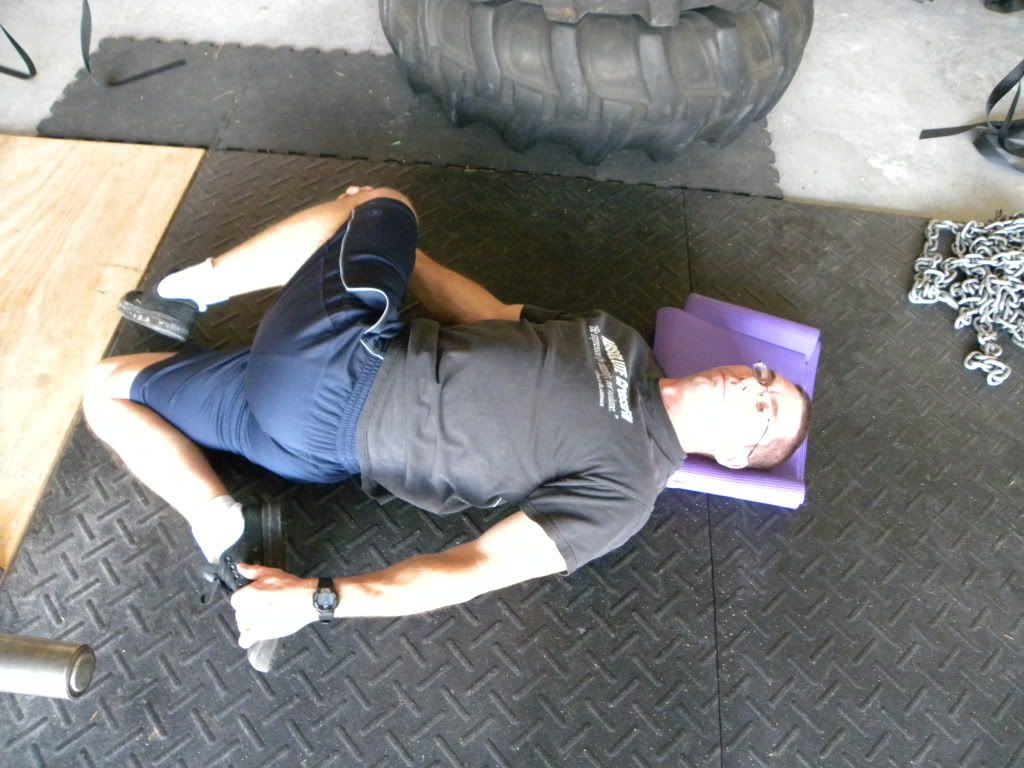
The Brettzel for thoracic mobility
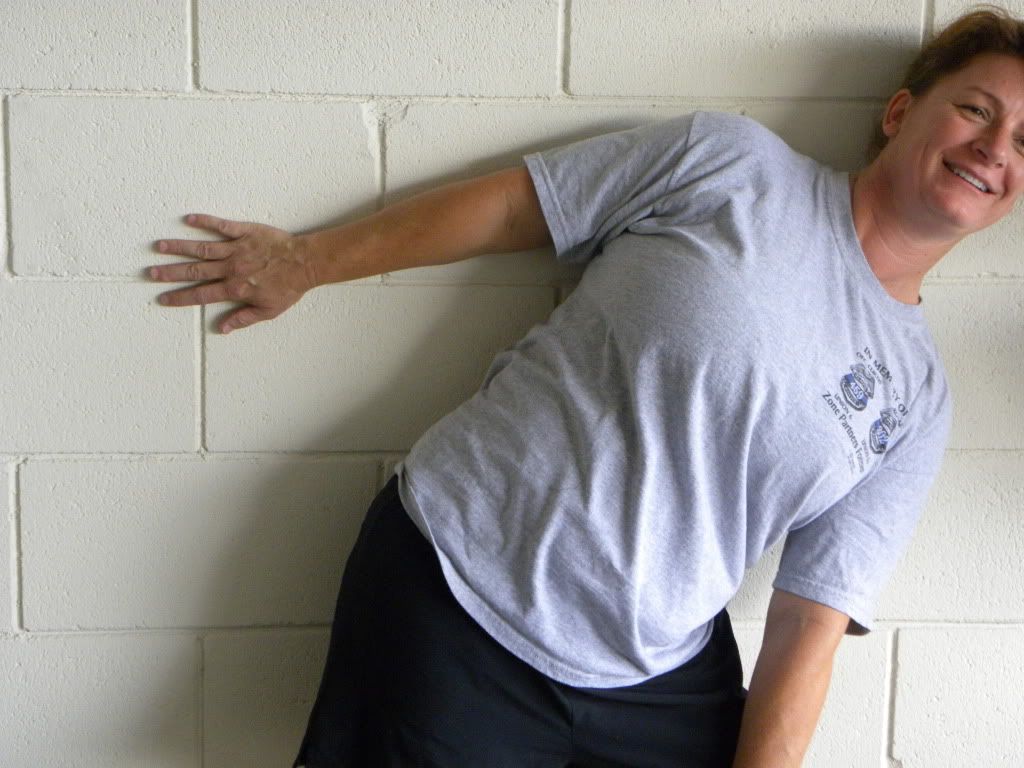
Go to our Photobucket to see Michelle's mobility improve
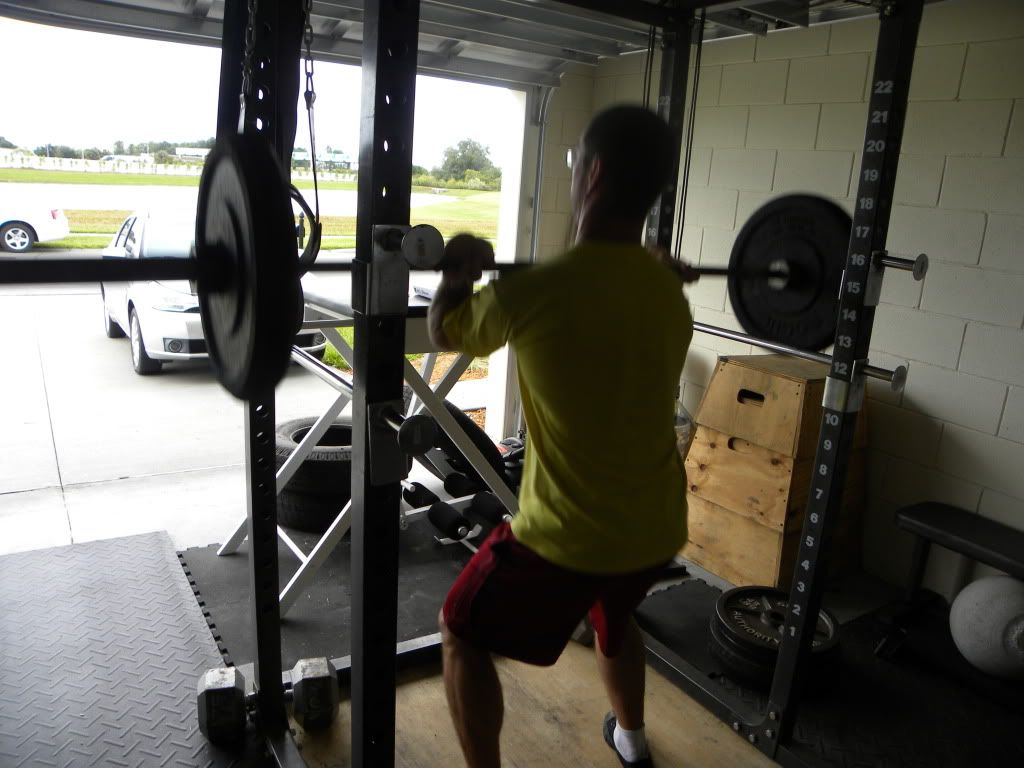
Dead Stop Front Squats
Side Presses
Deadlift 3x5
3 Rounds
Snow Sled
Waiter's Walk
Sunday, November 7, 2010
Thursday, November 4, 2010
Tuesday, November 2, 2010
Mobility and Strength Clinic

The ultimate lesson in muscle tension

12 pound "Sheila" Goblet Squats shall henceforth be included in the warm up.
Armbars
Windmills/Side Presses/Bent Presses
50 Swings
Monday, November 1, 2010
Deload Week
They never DELOAD.
In fact, they come in for weeks and weeks on end and train their asses off. That’s good and bad.
Good - in the fact that they’re trying to build muscle, as well as getting stronger and faster. They’re trying to get more mobile, more explosive and get better for their sport(s).
Bad - with all of this training, you must build times recovery into your program. I’m not talking about a one-day recovery session. I am talking about a week-long process that specifically pays attention to getting your body ready for the next intense three to four week training block.
This is called a deload.
What is a Deload?
Read the rest here
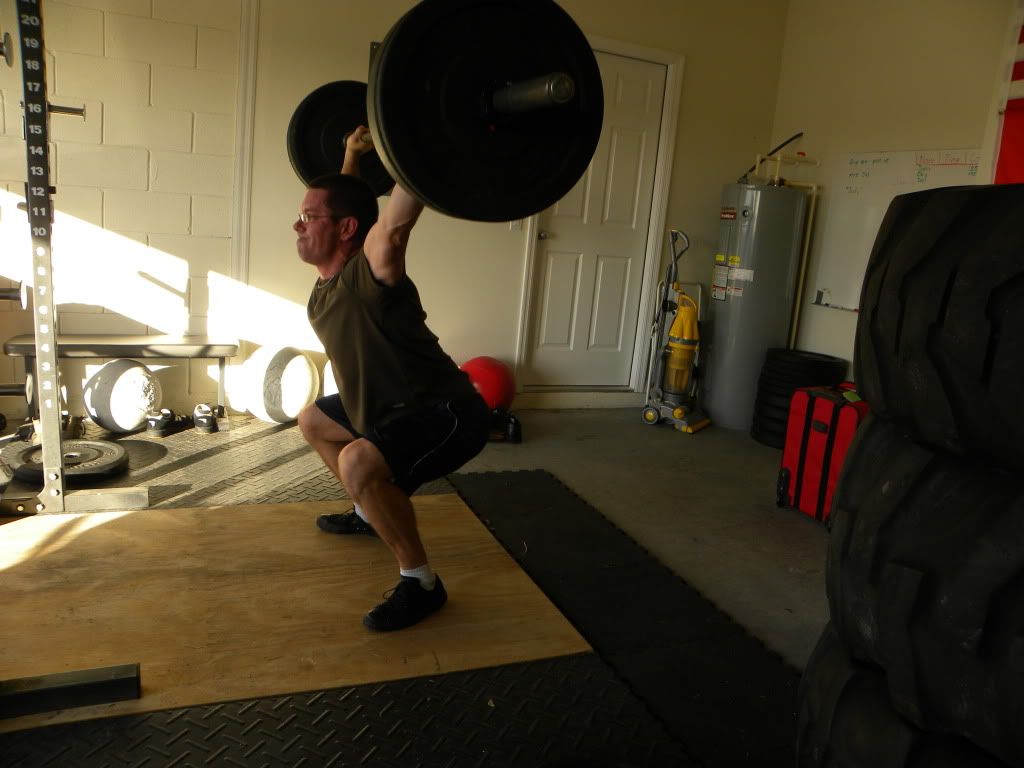
Practice One Arm Push Ups and One Arm/One Leg Push Ups
Box Jump
Kettlebell Snatch Technique
Goblet Squats
Tuesday, October 26, 2010
Monday, October 25, 2010
Valery Federenko Sets World Record
Valery Fedorenko, the man who brought Kettlebells to America, beat his own World Record with a 132 pound kettlebell Saturday live on JustIn.TV. A kettlebell is a special handled weight adapted for fitness and developed into its own sport in Russia from its original use as a precise counter-balance on a scale. This retired Champion is now Chief Advisor for World Kettlebell Club®, and is still making gains in strength and conditioning beyond his professional sport days more than 20 years ago.
Fedorenko, now 37 years old, began lifting kettlebells at the age of 12. It wasn’t until he was 16 that he began getting serious about the Sport, much like youth in America take to Basketball, Baseball and Football. Born in Kyrgyzstan, a former Soviet Republic located in Asia, Valery set several Official World and USSR Records and made many firsts, most notably breaking the Men’s Adult Absolute Snatch Record at a body-weight of just 163 pounds as a Junior Lifter.
Read the rest of this article here
Speaking of new records...
PR Overhead Squat from StCloudStrength on Vimeo.
Band Assisted Jumps
Turkish Get Ups
5 Rounds
3 Muscle Ups
6 Hang Power Snatches (Men use 105/Women use 73)
Sunday, October 24, 2010
Thursday, October 21, 2010
Muscle Imbalances
Read the rest here
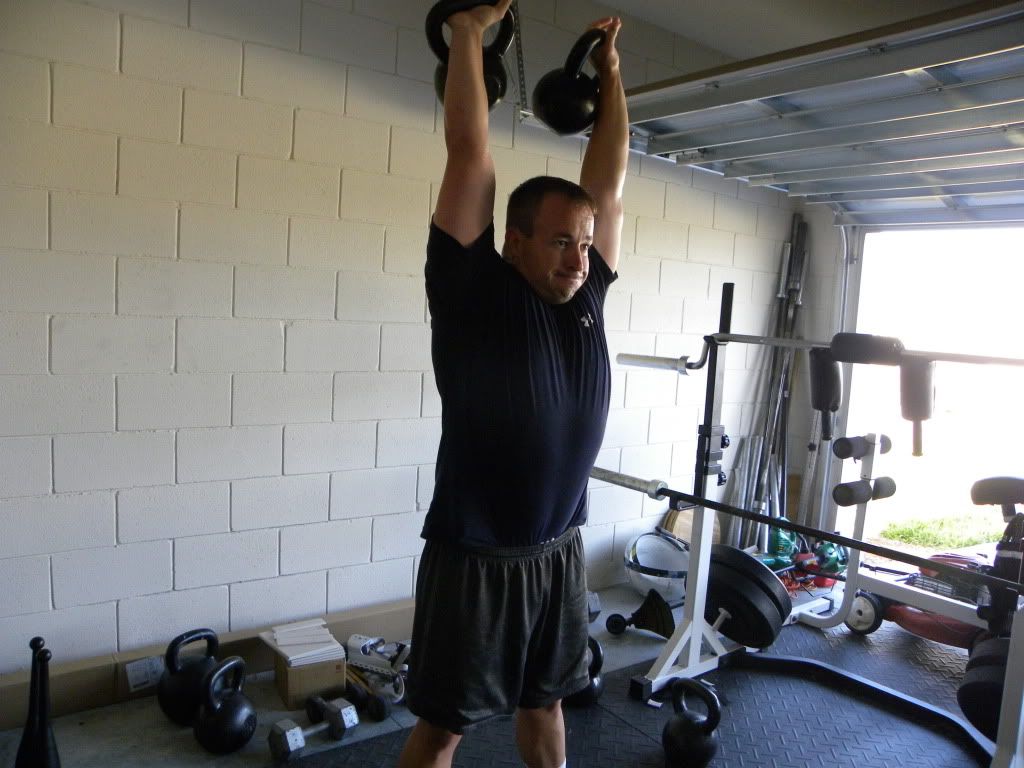
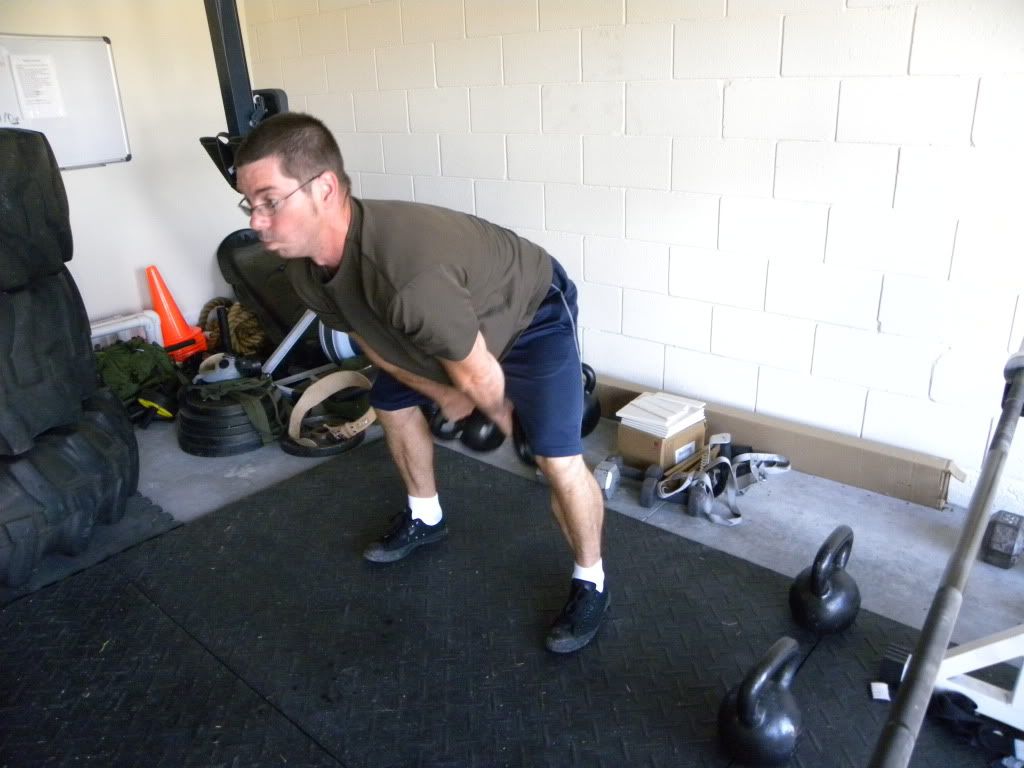
Goblet Squats
1 Minute of Deadlifts
Prowler Push
Wednesday, October 20, 2010
Flying Through The Air
Tuesday, October 19, 2010
Paleo Solution
Thursday, October 14, 2010
Butt Wink
Editor’s Note: Yes, there’s more than one sphincter. What?
2nd Editor’s Note: I don’t recommend Google image searching “butt wink” with the safe search “off”.
Read the rest of this article here
Line Stop Deceleration Drill
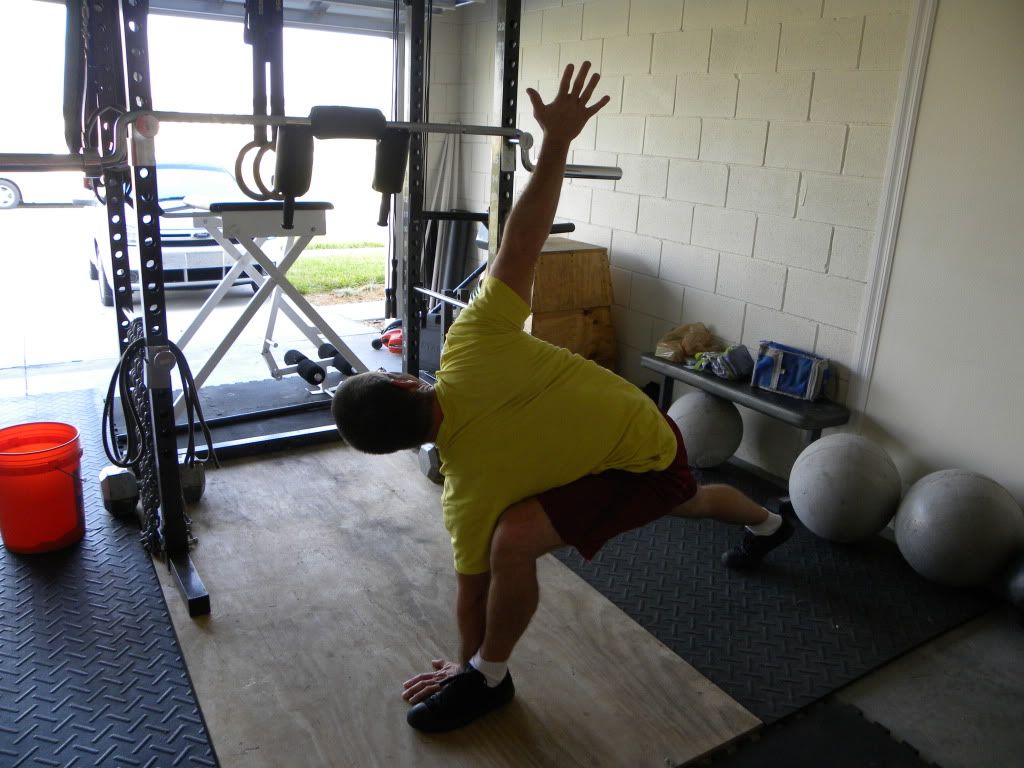
T-Spine Mobility
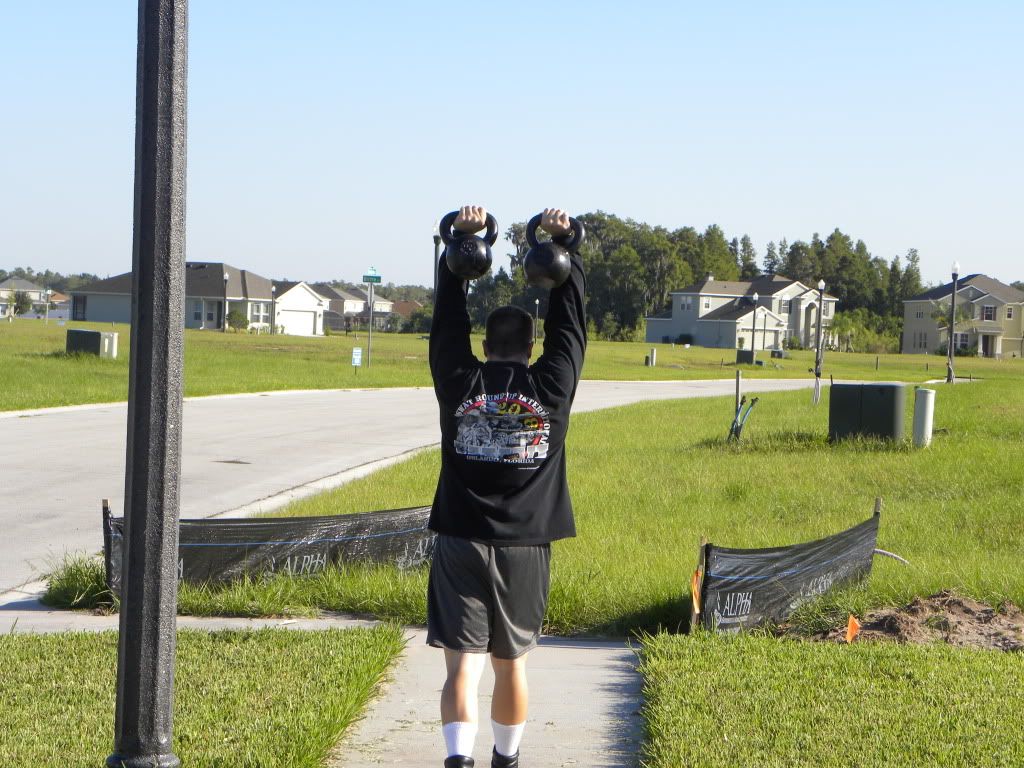
5 Minute Snatch Test
(Sharing the pain ;))
Tuesday, October 12, 2010
SMR With Eric Cressey
Yoga Downward Dogs
Overhead Barbell Jumps
Kettlebell Press
10x2
3 Rounds
1 Atlas Stone Lift
3 Muscle Ups
Wednesday, October 6, 2010
Safety Squat Bar
I used to think this bar was a total waste of time and money before I used it for the first time at Westside Barbell Club in the early 1990’s. I came to Westside from a very intense progressive overload background. For those who are not familiar with this style of training, progressive overload begins by performing sets of 10 repetitions for several weeks and over two to three months, one would gradually decrease the reps until you perform singles. This style of training worked well for me when I first began training. As I got more experienced, I needed something more advanced and started training at Westside Barbell. I had to find something new or I was never going to get better. While at Westside, I was introduced to a whole new style of training. It was completely different and I had never seen or read about this kind of training before. I was hesitant at first but since I had not made any progress in many years I figured I had nothing to lose and everything to gain.
I had seen the Safety Squat bar before and thought it was a total joke. I always thought that if you wanted to squat more, you simply squatted. And if you wanted to deadlift more, all you had to do is deadlift. To me everything else was just to get bigger, not stronger.
Read the rest of this article here

T-Test
5-10-5 Drill
5 Minute Farmer's Walk
Tuesday, October 5, 2010
Crucible Gym
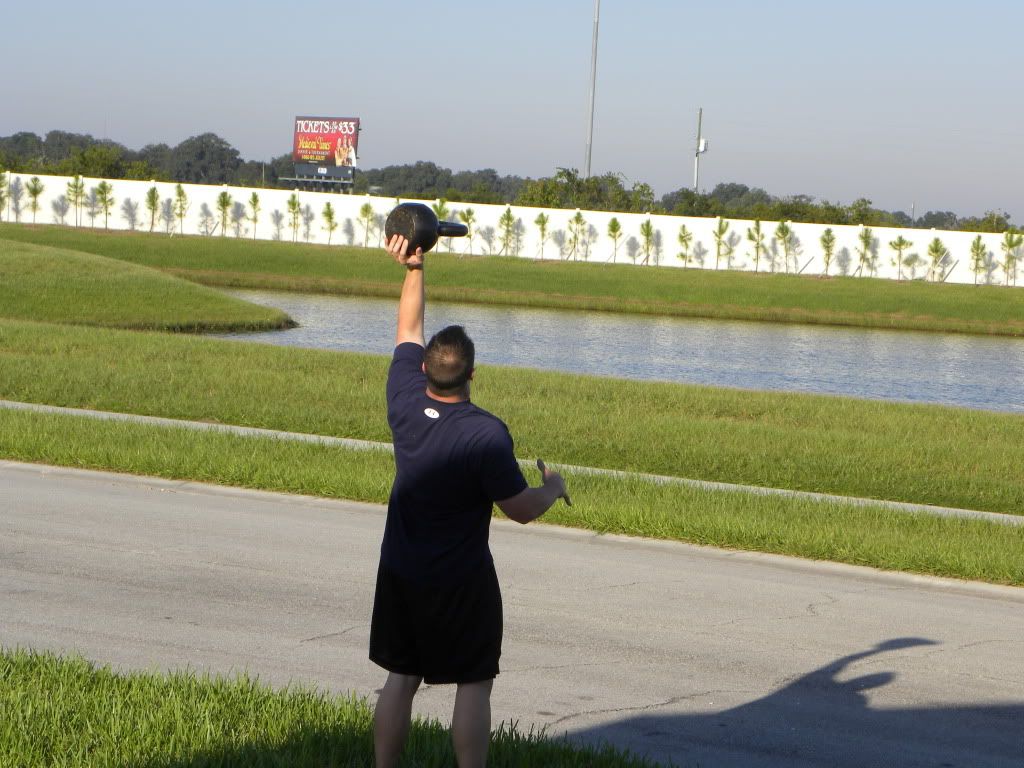
24 kilos soon feels like 32 kilos
Band Assisted Jumps
Snatch Pulls
8x2 @90%
Pistol Practice
25-20-15-10-5
Jumping Squats
Clapping Push Ups
Leg Press vs Squat
Why do I like this consistency? Because it allows me to structure other important workouts, like leg training, around days that the douchebag crowd is occupying the various glam exercise stations.
And even when I'm still forced to wait a bit, the line-up for my beloved squat rack is always far shorter than the leg press queue (arm curls in the squat rack crew notwithstanding).
Silly weekend warriors. Everybody knows that squats are superior to leg presses right? They're harder to do, require more coordination, and just rate higher on the exercise badass scale than something that resembles a plate-loaded La-Z-Boy recliner.
Don't these douchebags read Testosterone?
Read the rest of this article here

PR Front Squat
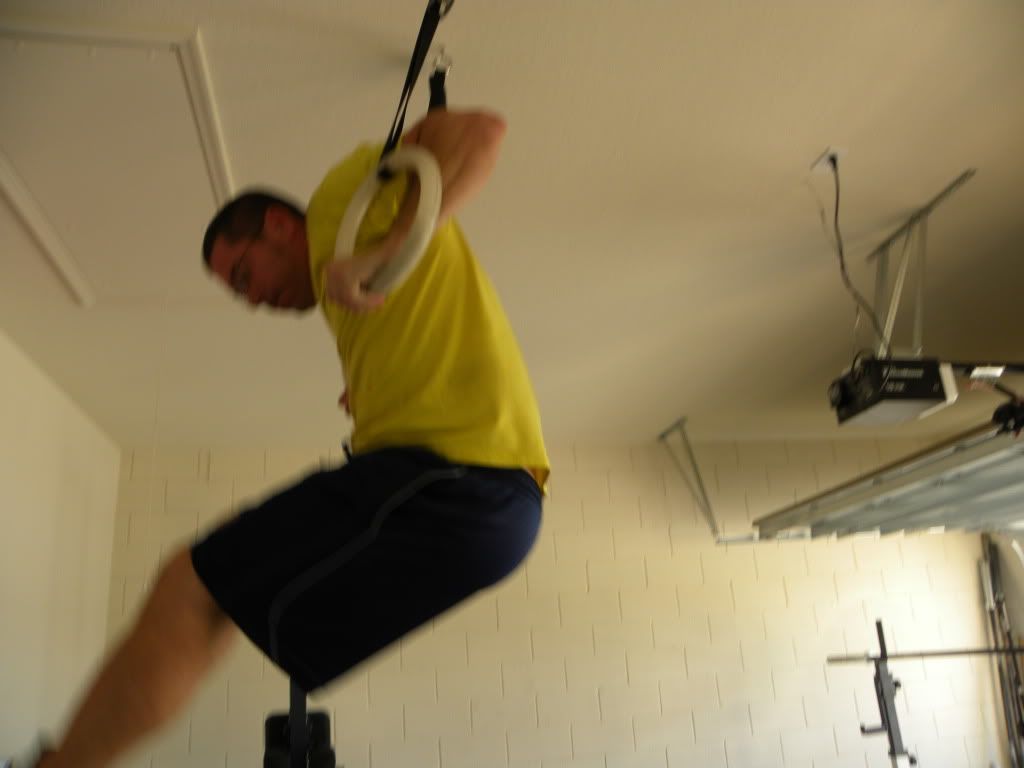
Our new muscle up rig
Sled Drag
Kettlebell Press
Litvi-Sprints
8 Hang Power Cleans
Sprint 330m
Tuesday, September 28, 2010
Your Monthly Reminder...
Side Presses from StCloudStrength on Vimeo.
Depth Jumps
Weighted Dips 10x2 @55%
Shrugs
Death by Push Ups
Innovative Sled Dragging
Sled dragging is an excellent tool to help develop this general conditioning baseline.
Read the rest of this article here
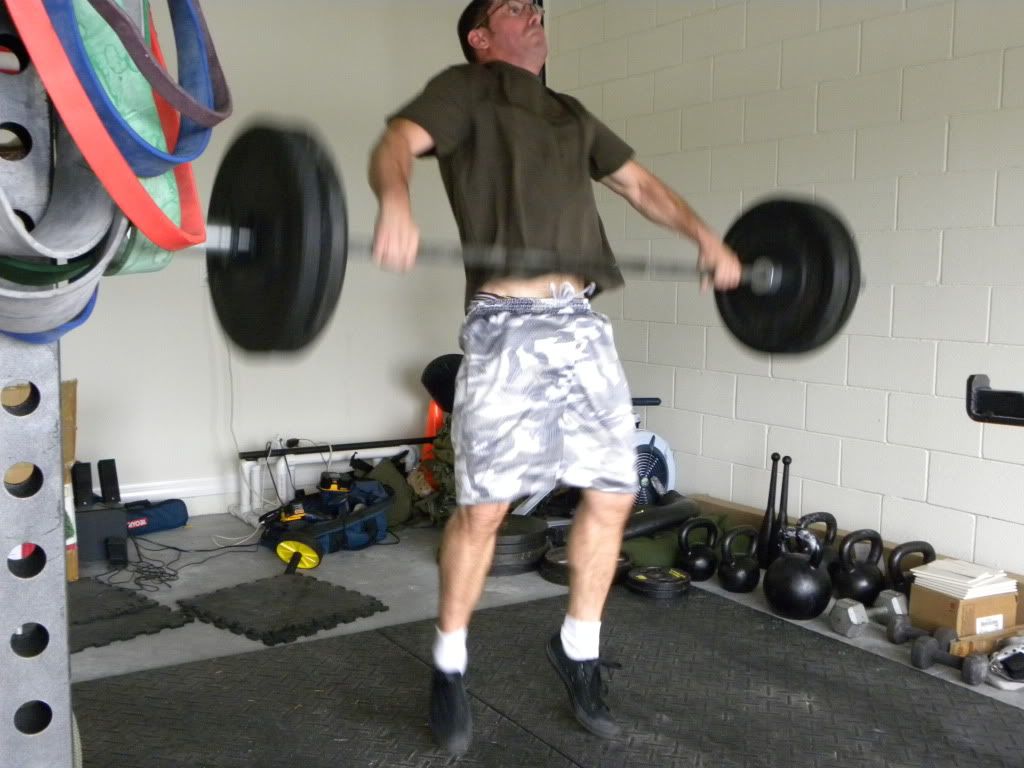
Joel pulling his way to a PR snatch
Hand Jumps
Overhead Squat 2x2
Side Presses
3 Rounds
Bear Crawl
10 Snatches per arm (Men use 32k/Women use 24k)
Friday, September 24, 2010
9 Steps To Prevent Overtraining
2. Take advantage of therapeutic modalities
3. Use good technique when lifting
4. Get 8 hours of sleep
5. Proper nutrition and sound supplementation
6. Take advantage of psychological modalities that enhance recovery like visualization or meditation
7. Avoid all stressors that adversely affect your training, just say no to negative energy!
8. Avoid tobacco, alcohol and narcotics
9. Properly cycle training efforts
Taken from here
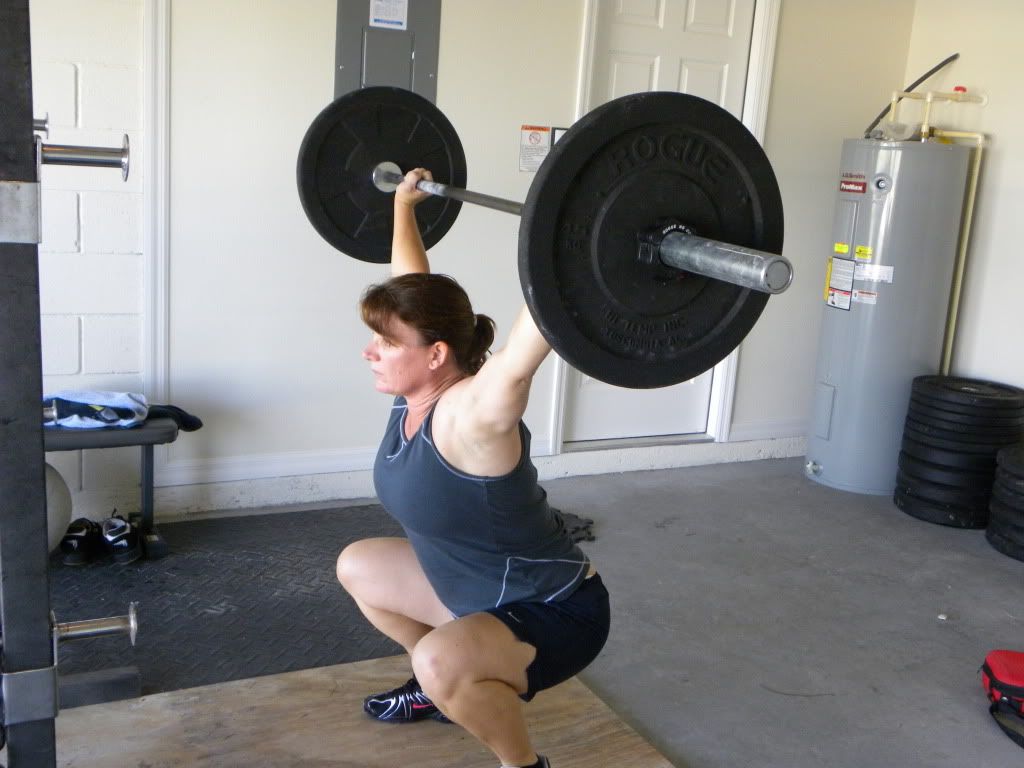
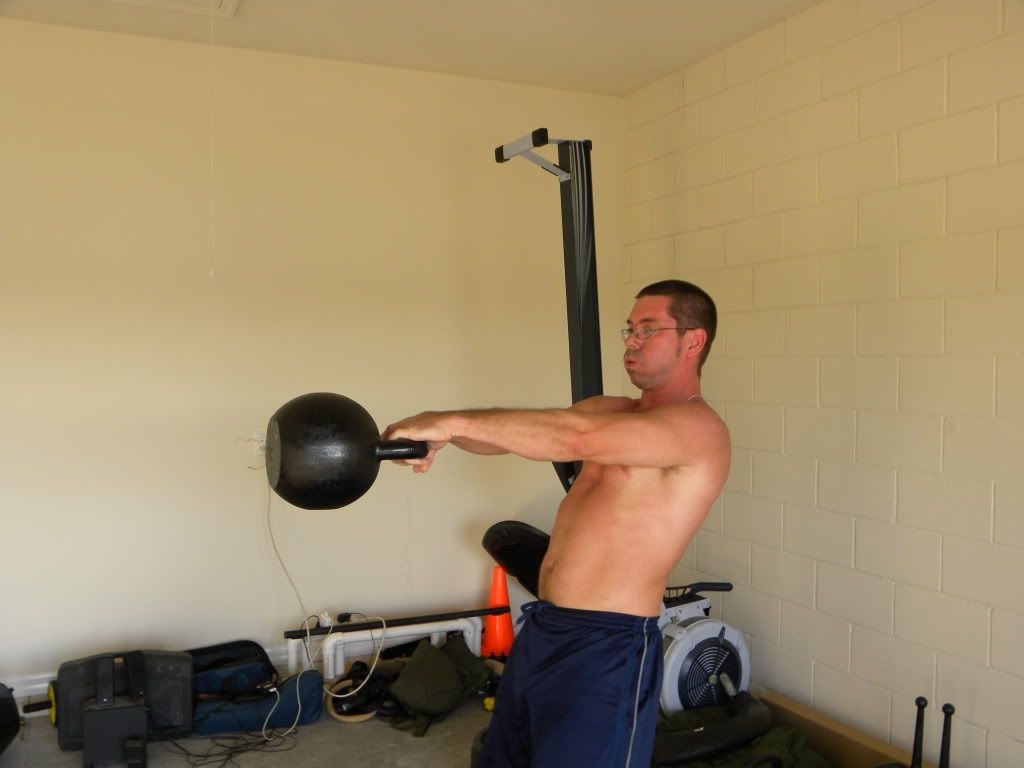
The wrecking ball known as "The Beast".
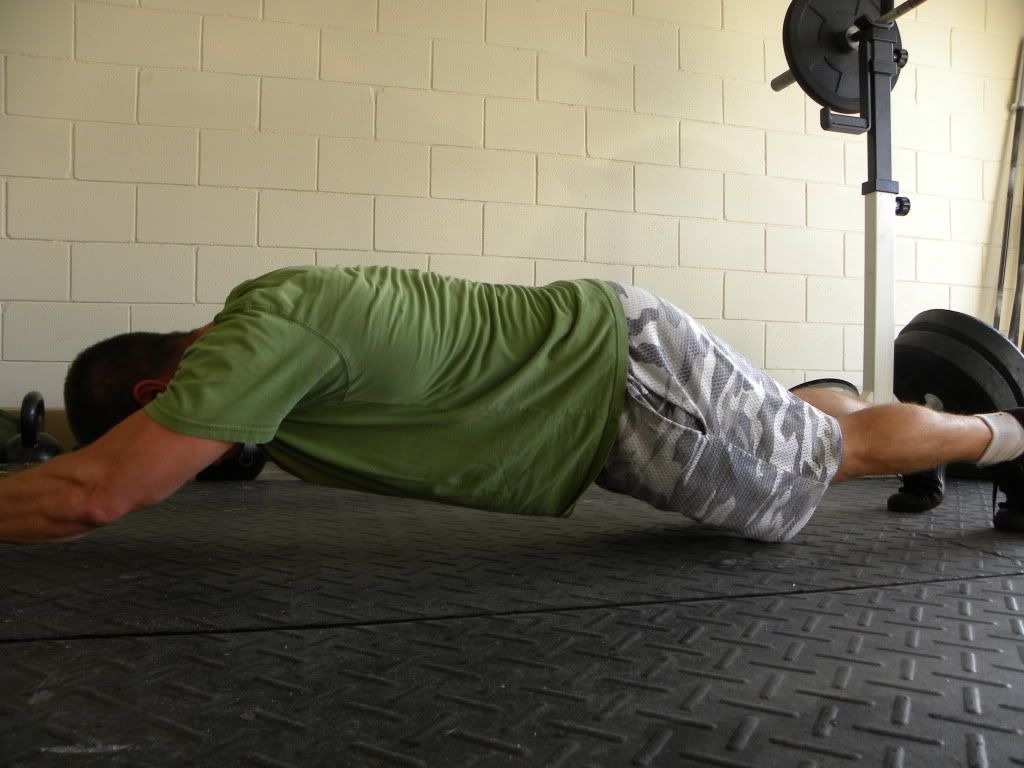
AbWheel rollouts from standing. Good luck getting out of bed the next morn.
Chain Pull Ups
4x2
Place a number of chains behind your neck and do two reps, take a chain off and repeat until you are only using bodyweight.
Sots Presses
3 Rounds
8 Cleans (Men use 155#/Women use 103#)
Prowler Bear Crawl
Thursday, September 23, 2010
Thursday, September 16, 2010
Kettllebell Trajectory
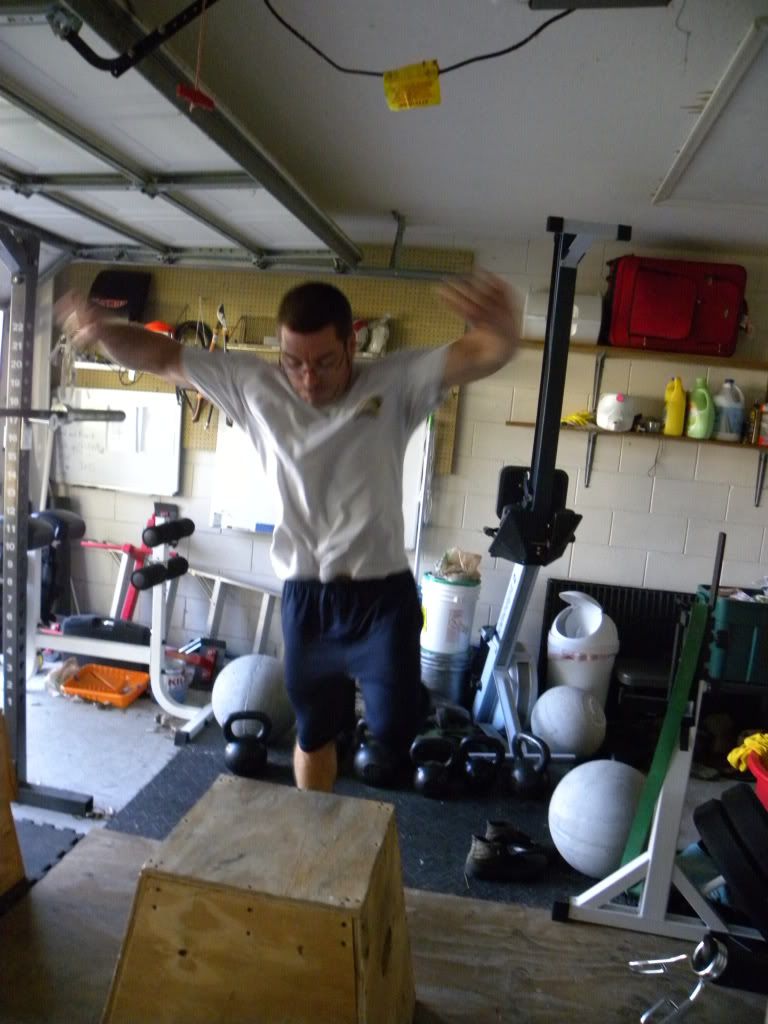
Flying through the air on one leg!
Hand Jumps
Overhead Squat
3x10
Litvi Sprints
8 Deadlifts (Men use 315#/Women use 208#)
Sprint 200m
Wednesday, September 15, 2010
Deadbugs
Monday, September 13, 2010
6 Ways To Gain Wrist Strength

- Do wrist curls and extensions.
- Grab a dumbbell with the weights off of one side and rotate internally and externally. Make sure you are doing stuff to keep your ROM optimal. Start easy and work yourself in.
- Grip Devices: grippers, balls, etc.
- Radial Deviation against a resistance band.
- Ulna Deviation vs a resistance band.
- Supination and pronation vs a resistance band.
One Leg Box Jumps
Kettlebell Shoulder Press
4x3
10 Prowler Sprints
Thursday, September 9, 2010
Chains And Bands Are Crap
Read this article here
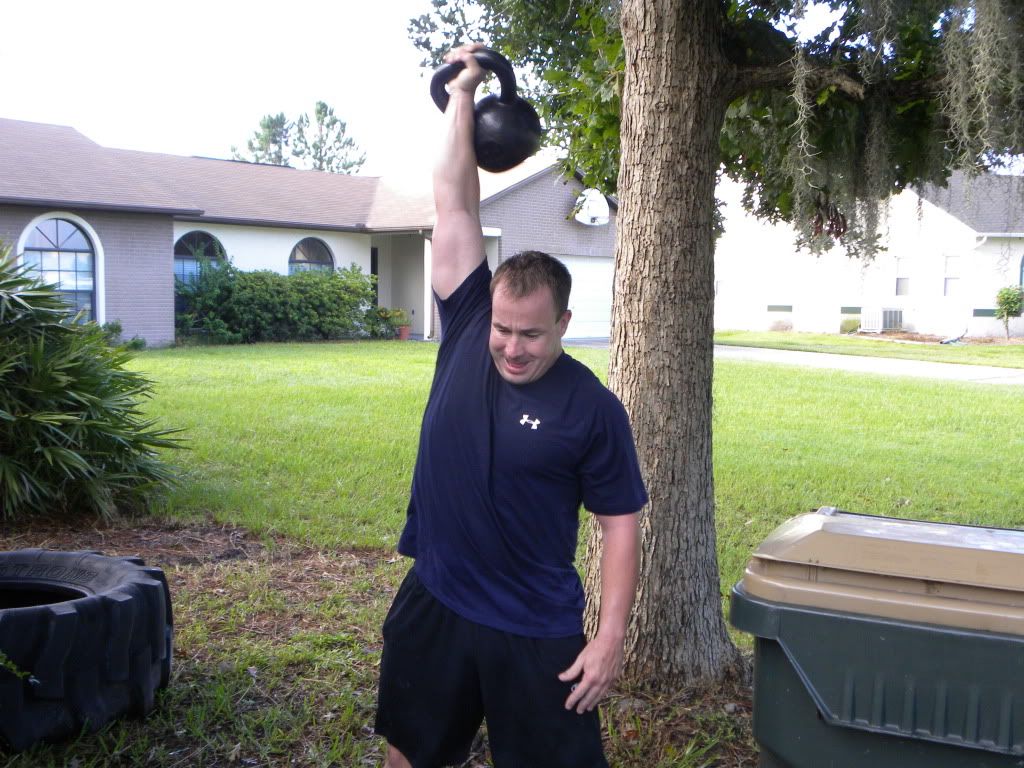
Reaction Ball
Med Ball Throws
Box Drill
3 Rounds
3 Hang Squat Snatches (Men use 95#/Women use 63#)
Prowler Pull
Wednesday, September 8, 2010
My first reason goes back to the time when a guy named David Marmon hired me to be his graduate assistant. I remember my first day on the job. I wanted to get my workout in. Like a typical meathead, I went out and did some crunches, bench presses, and bicep curls. After my “gettin’ swole” workout, I sat back down in the office expecting some praise and admiration for my superior workout skills. David greeted me with, “Why do you train that way?” I was dumbfounded. I thought I had all the answers when it came to things like getting stronger, fitter, and leaner and all around more awesome. He followed his question with, “We train movements, not muscles.” I guess the idea of training movements, not muscles, kind of stuck with me (even though we still did sit-ups in our programming at the time). Train movements, not muscles.
So taking the train movements, not muscles approach, is bringing your sternum closer to your pelvis a movement you want to get better at? Think about it. When you squat, what are the coaching cues you hear? Chest out. Back flat. Hips back. Right? Same thing with deadlifts and many other exercises. Chest out. Back flat. The spine evolved to handle weight in the “chest out, hips back” position. That’s why we coach it that way. Why would we want to get better in producing force in any other way?
Read the rest here
Pull Ups
12x2 @ 70%
Run 400m
21-15-9
Man Makers
Ring Dips
Run 400m
Monday, September 6, 2010
Candid View Of Westside Barbell
Preperation Mode
Wall Squats
M/E Deadlift
5 Rounds
10 2 Hand Kettlebell Presses (Men use
15 Box Jumps (Men use 24"/Women use 18")
Friday, September 3, 2010
Assisted Eccentrics
Louie Simmons
Have you ever thought that ideas should be reversed? What if we
were born with the wisdom and the reasoning of a 65-year-old? We
would make more right decisions and possibly stay out of trouble and
make the most of our time while we’re young. Then as we get older,
we could start thrill-chasing and taking chances that instinctively we
would never consider. This of course would lead us to live by the
code of the poet Dylan Thomas, “Do not go gentle into that good
night, old age should burn and rage at close of day; rage, rage
against the dying of the light” (1940). I try to live as Dylan Thomas put
into words, and yes, I have the scars to prove it. But of course we can
never live our lives in reverse.
There are a few that have read the exploits of a person who has been
said to have made great progress doing let’s say eccentrics. But were
there other factors involved in their training? I have read several
articles by sports experts around the globe, yet none have conclusive
evidence that eccentrics work. Mel Siff in Supertraining explains
eccentrics as action in which the proximal and distal muscle
attachments move away from one another. Eccentric work uses
significantly less energy than concentric work. When doing slow
eccentrics with large loads, there is no reason to associate these
advantages with the possibility of developing the ability to move
quickly and powerfully in concentric work. Lowering weights slowly
builds larger muscles for body building but will not assist concentric
actions.
Read the rest of this article here

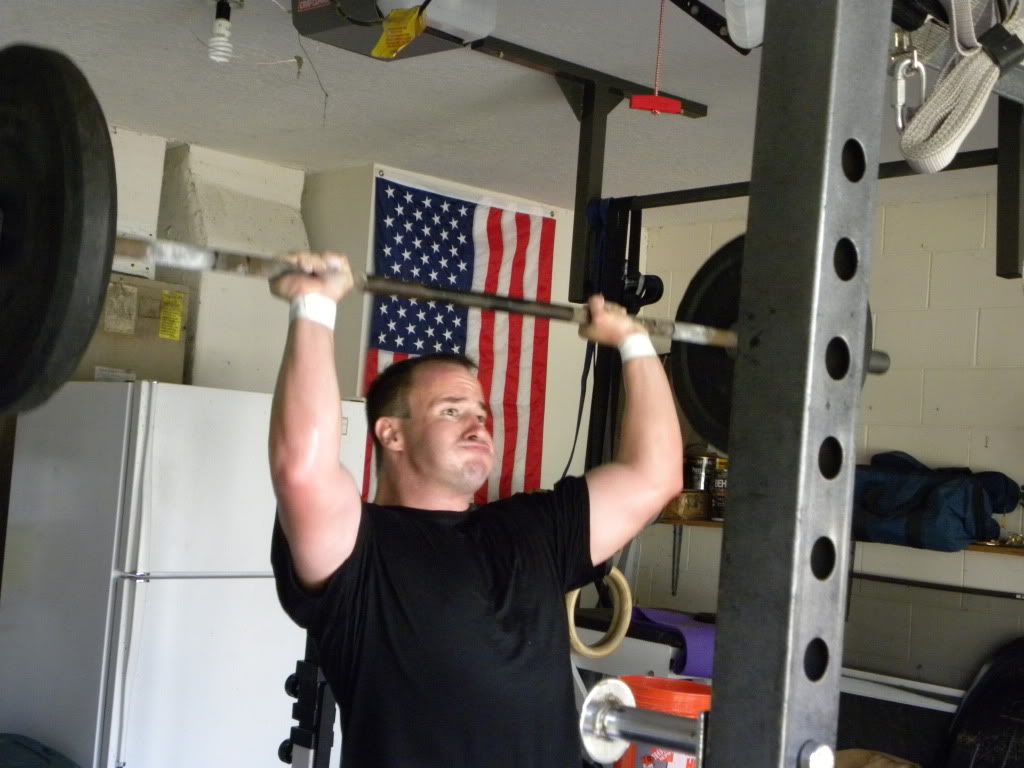
Farmer's Walk
Weighted Pull Ups
4x10
3 Rounds
5 Hang Power Cleans (Men use 155#/Women use 103#)
10 Push Presses (Use Same Bar)
Bear Crawl
Wednesday, September 1, 2010
Tuesday, August 31, 2010
Monday, August 30, 2010
Thursday, August 26, 2010
Eggxactly
SMART FUEL
People like to use eggs in words like eggscellent, eggxactly and eggstatic.
Poor eggs. I recommend using them in your meals instead – and think beyond breakfast on occasion. Eggs are slowly regaining favor after their Humpty-Dumpty fall during the whole cholesterol paranoia of the 1960s, 70s and 80s.
We know that they contain valuable protein, vitamins and minerals: stress-busting selenium, antioxidant E, and eye-healthy lutein among them.
Because I am an egghead (sorry), I’m proud to bring you the latest findings from a study Mark pointed out to the Bees in the Journal of Nutrition. In a study that was randomized (good), controlled (great), and cross-sectional (nice), scientists found that a daily egg gave people’s eyes a boost with lutein and zeaxanthin (an antioxidant from the carotenoid family) and didn’t raise their serum cholesterol. Not that we worry too much about cholesterol anyway. That’s right – we don’t lose sleep over cholesterol! Just one of the many MDA ongoing health debates you might want to check out in the forum.
Taken from Mark's Daily Apple
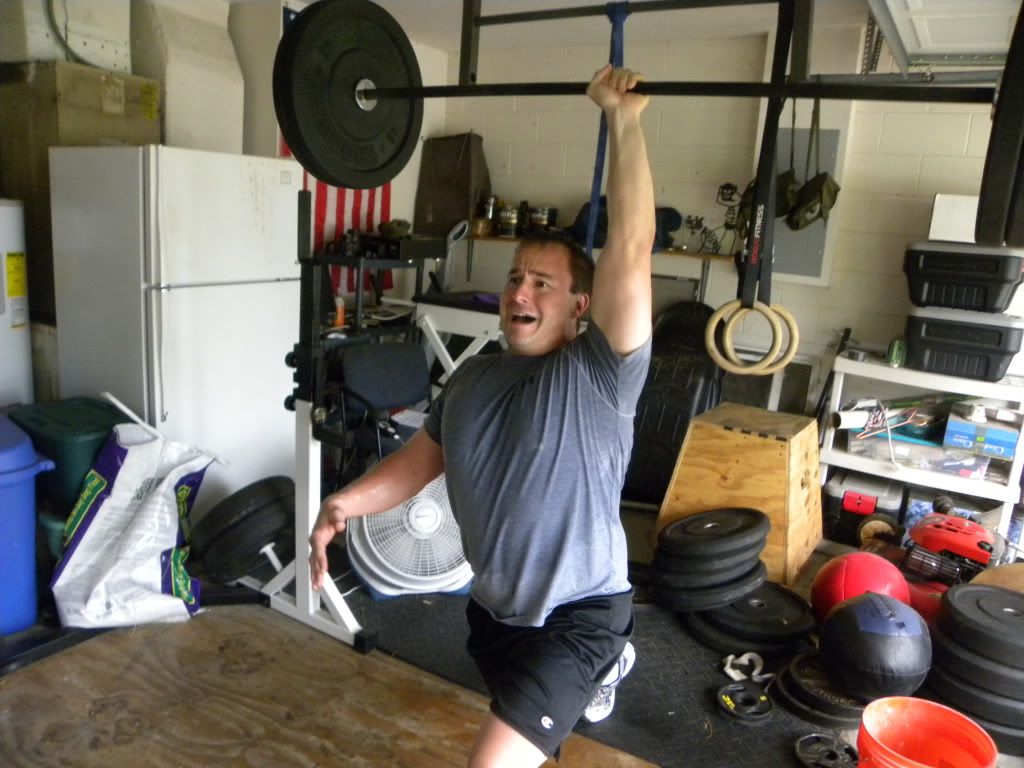
58# TGU
Weighted Box Jumps
Box Squats 3x10 @ 70%
Goblet Squats 2x5
10-9-8-7-6-5-4-3-2-1
1-2-3-4-5-6-7-8-9-10
Pull Ups
Clapping Push Ups
Tuesday, August 24, 2010
RKC Advanced Strength
Back in ancient Greece, in the days of the battle at the Hot Gates, the human race had superior genetics compared to us in this lifetime. A couple of years ago an experiment was conducted across history. Exercise physiologists, engineers and historians from several universities across Europe set out to determine the level of conditioning these heroes of ancient times possessed.
By an historical analysis of information on these men’s training, ability to sail their ships and cover great distances by foot it was shown that the cardiovascular endurance and strength of the “average” man would be hard if not impossible to find a match for today—even when recruiting from the ranks of world level athletes. The scientists wrote: “It would be hard today to find enough world class athletes in the entire world to row a single copy of an ancient battleship at the same speed and for the same duration as the men from the past were able to do. Today we would not stand a chance against these men”.
Read the rest of this article here.
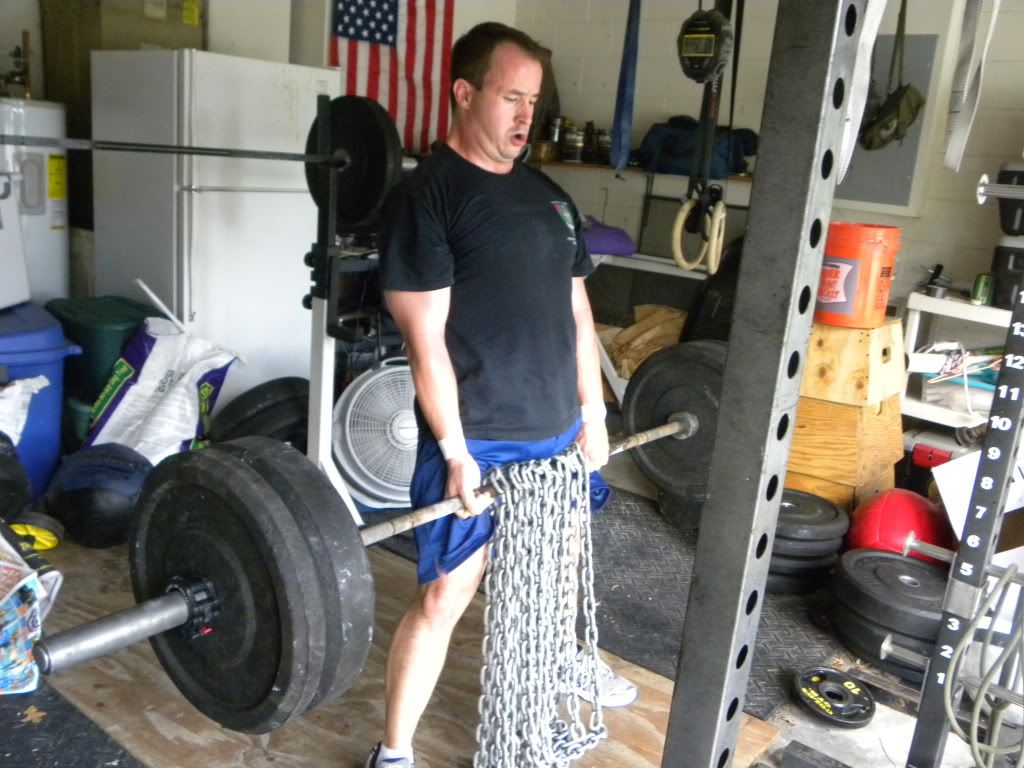
Thrusters
8x2
Kettlebell Complex
3 Cycles, 6 Reps per side
Side Pressx3
Front Squat
Clean
Push Press
Snatch
Two Hand Swing

Thursday, August 19, 2010
10 Things We Should Already Be Doing
Throughout my years in the fitness industry, I’ve seen many things both good and bad. Working at a commercial gym for two years, I tend to see more bad than good.
Below is a checklist I came up with to help you determine whether you’re truly training or just wasting your time.
#1 Are you squatting or deadlifting regularly?
Hitting 3–4 sets of 135 lbs for 10 reps doesn’t count. You should be performing heavy deadlifts or squats at least one time per week. I’ve found that a heavy deadlift day and a squat day in the same week generally doesn’t work because it’s way too taxing on the body. Unless you’re doing these two exercises regularly, don’t come to me asking how to put on more muscle.
#2 Do you perform body weight movements?
My number one upper body movement is pull-ups, either body weight or weighted. If you don’t perform pull-ups regularly, get out of my gym. You’re wasting space. On top of pull-ups, there are hundreds of body weight movements that should be utilized in any training program. If you can’t move your body weight fluently, what good are you? And no, I don’t care if you bench press 500 lbs or more.
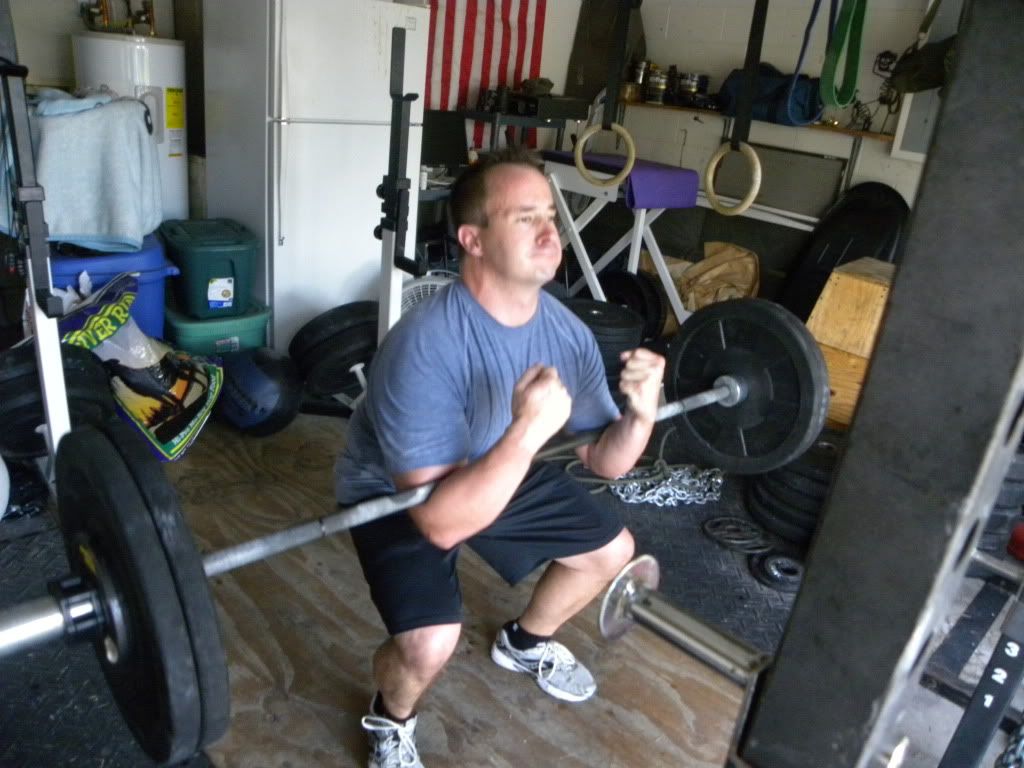
1 Minute of Deadlifts
Try to get between 10 and 20.
If you get less than 10, you went too heavy.
More than 20, too light
Sumo Deadlifts
3x3
5 Rounds
10 Pull Ups
25 Jumping Squats
